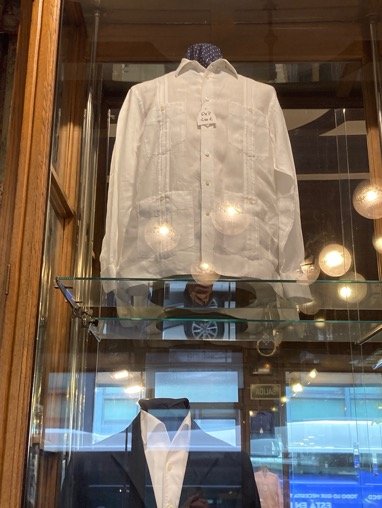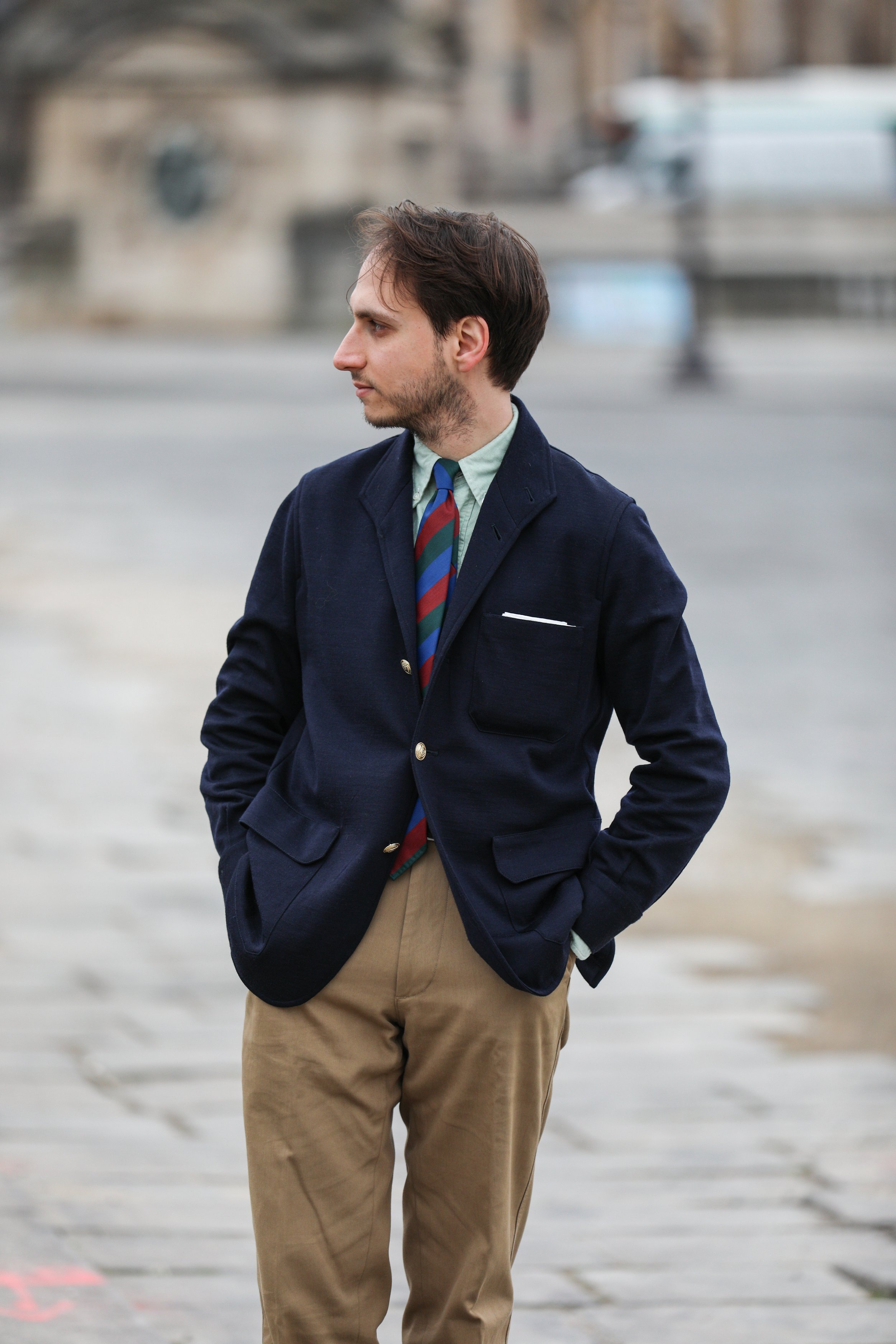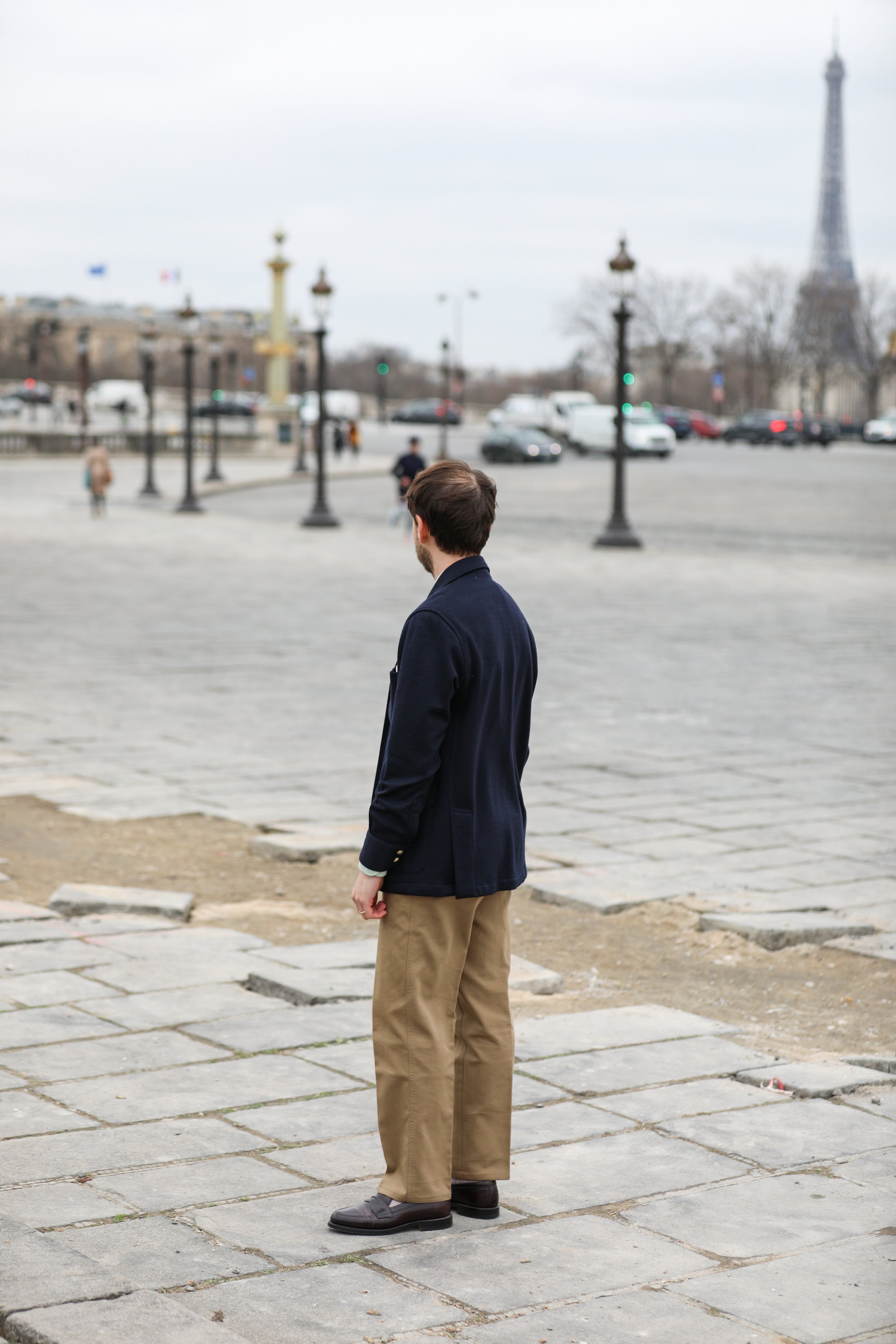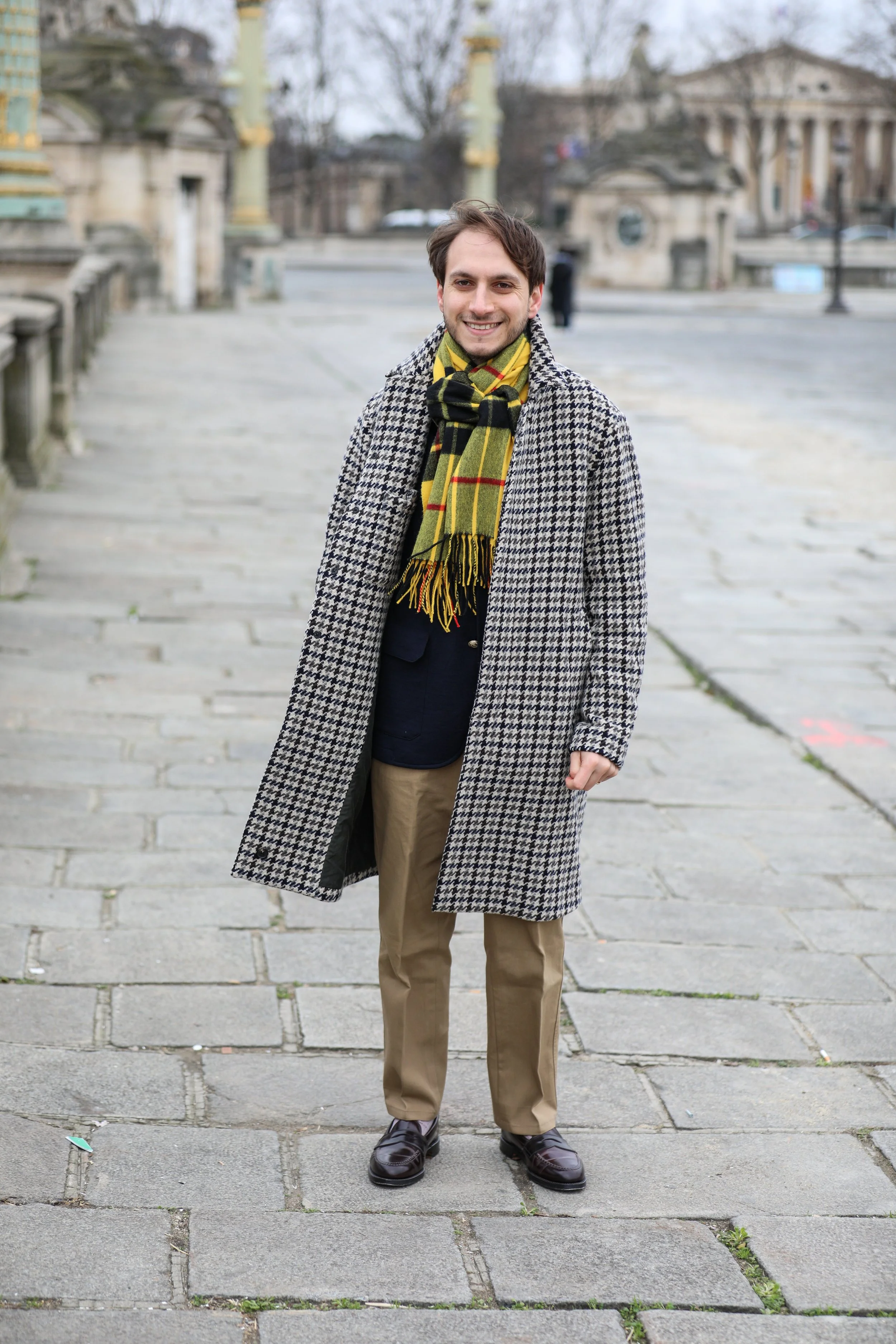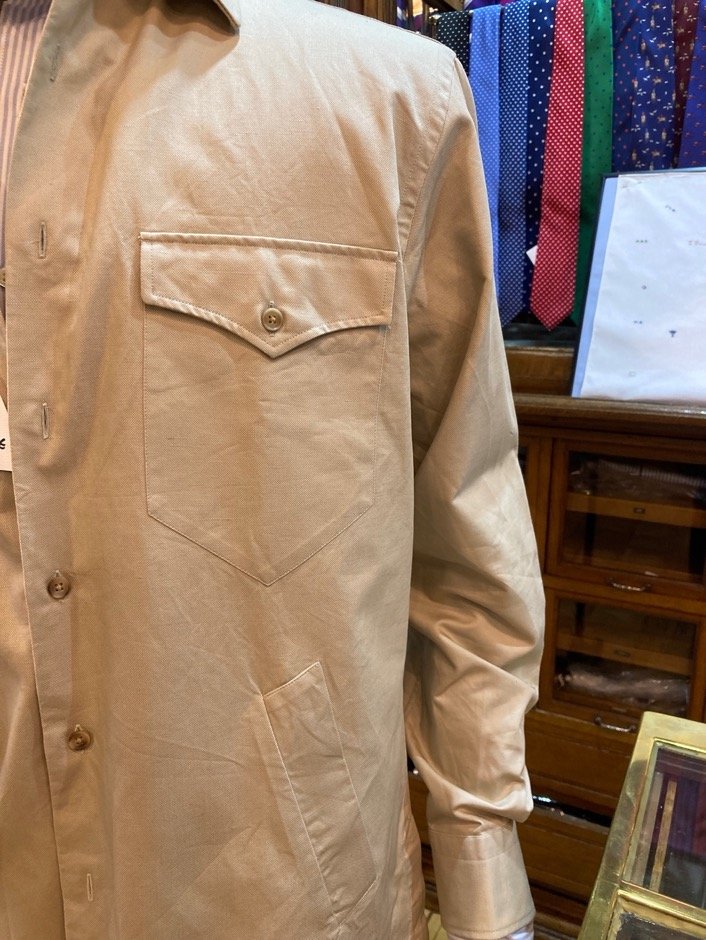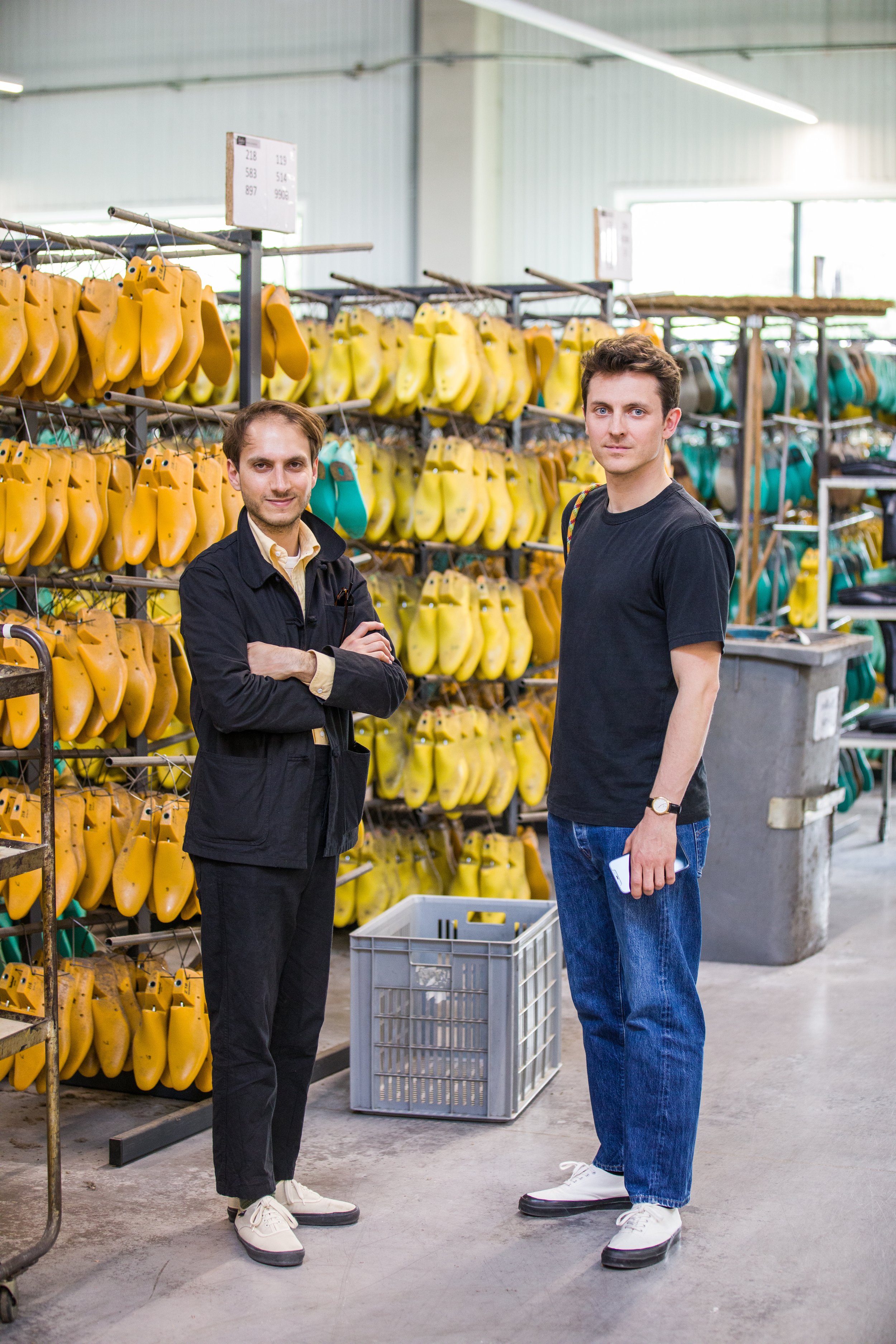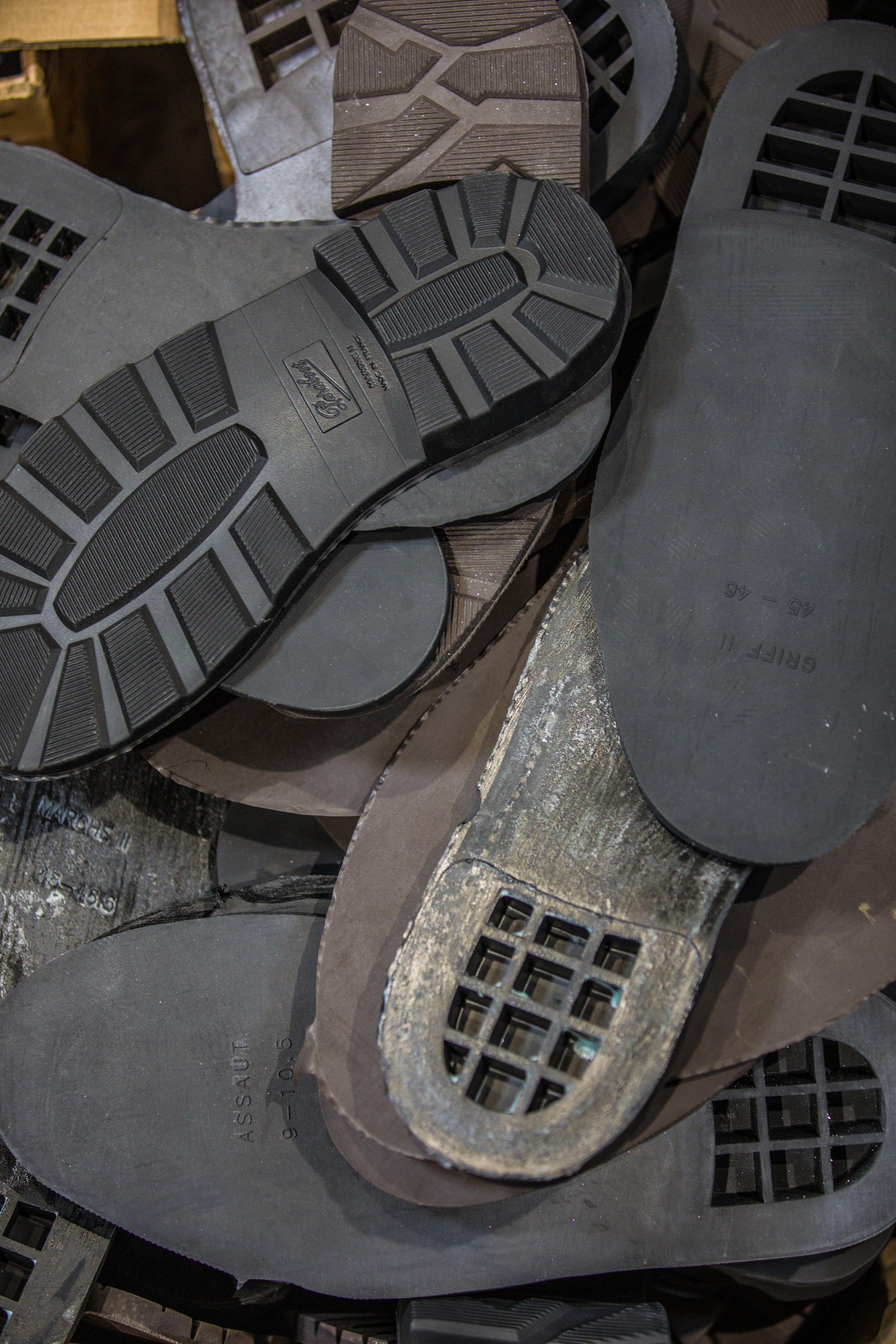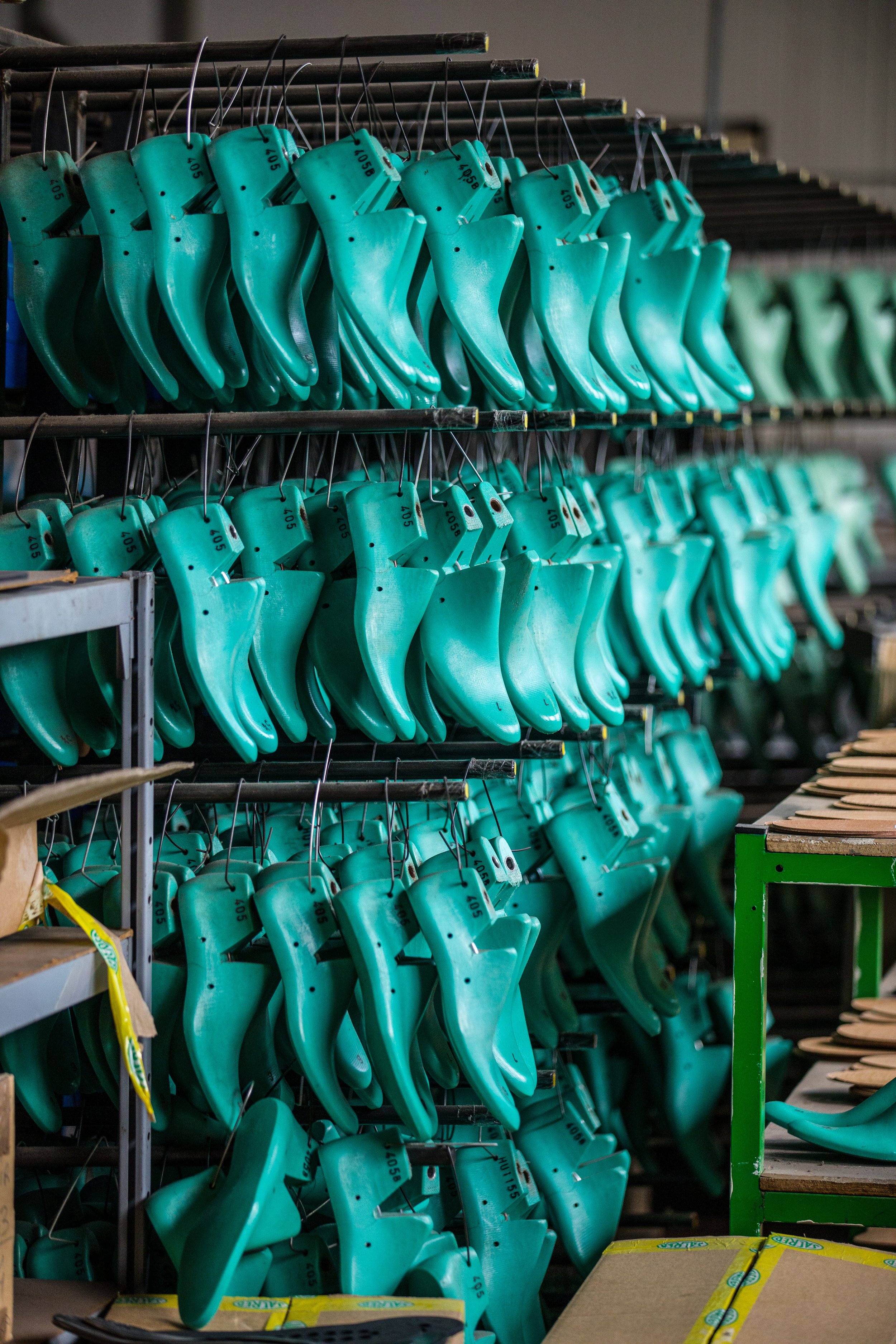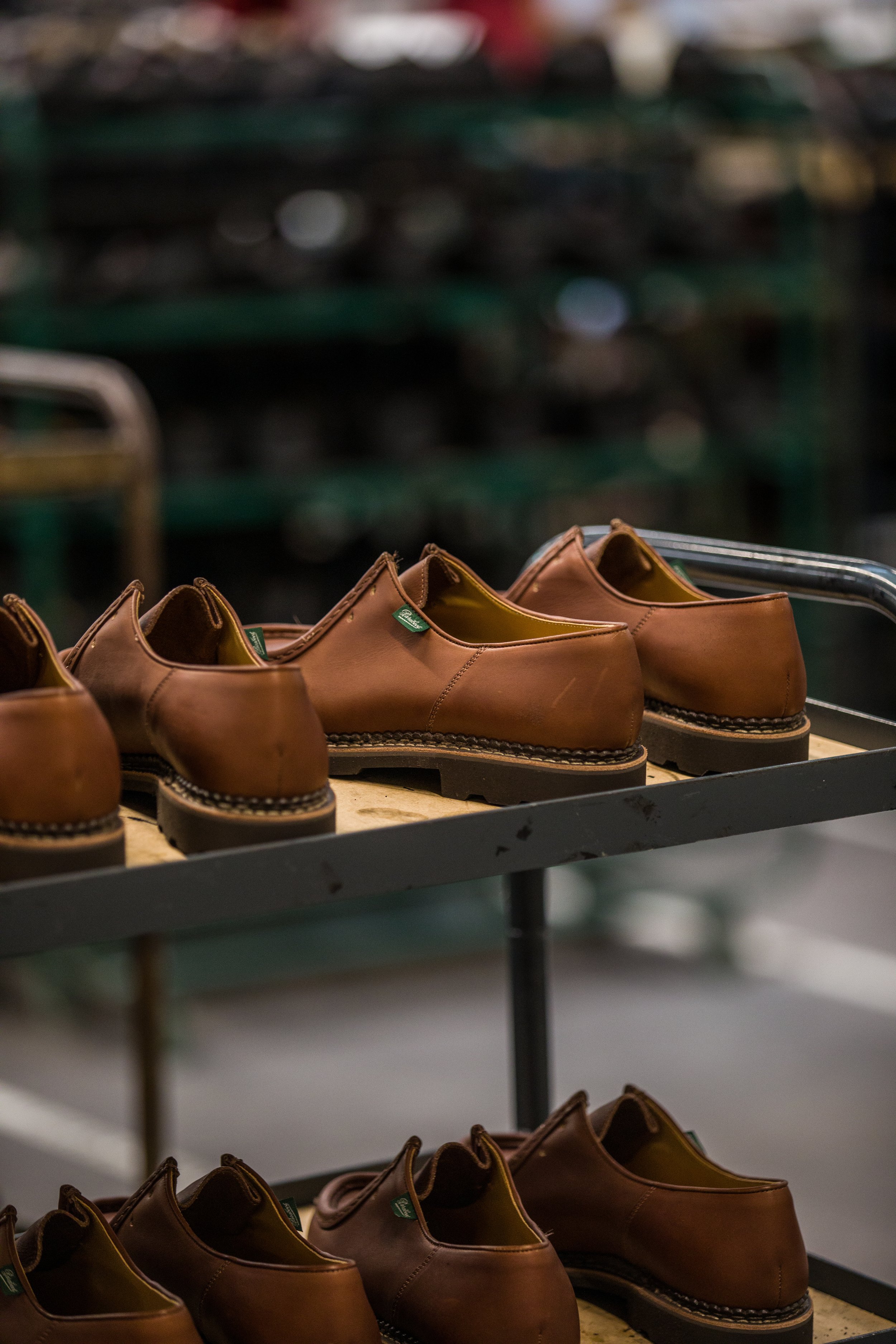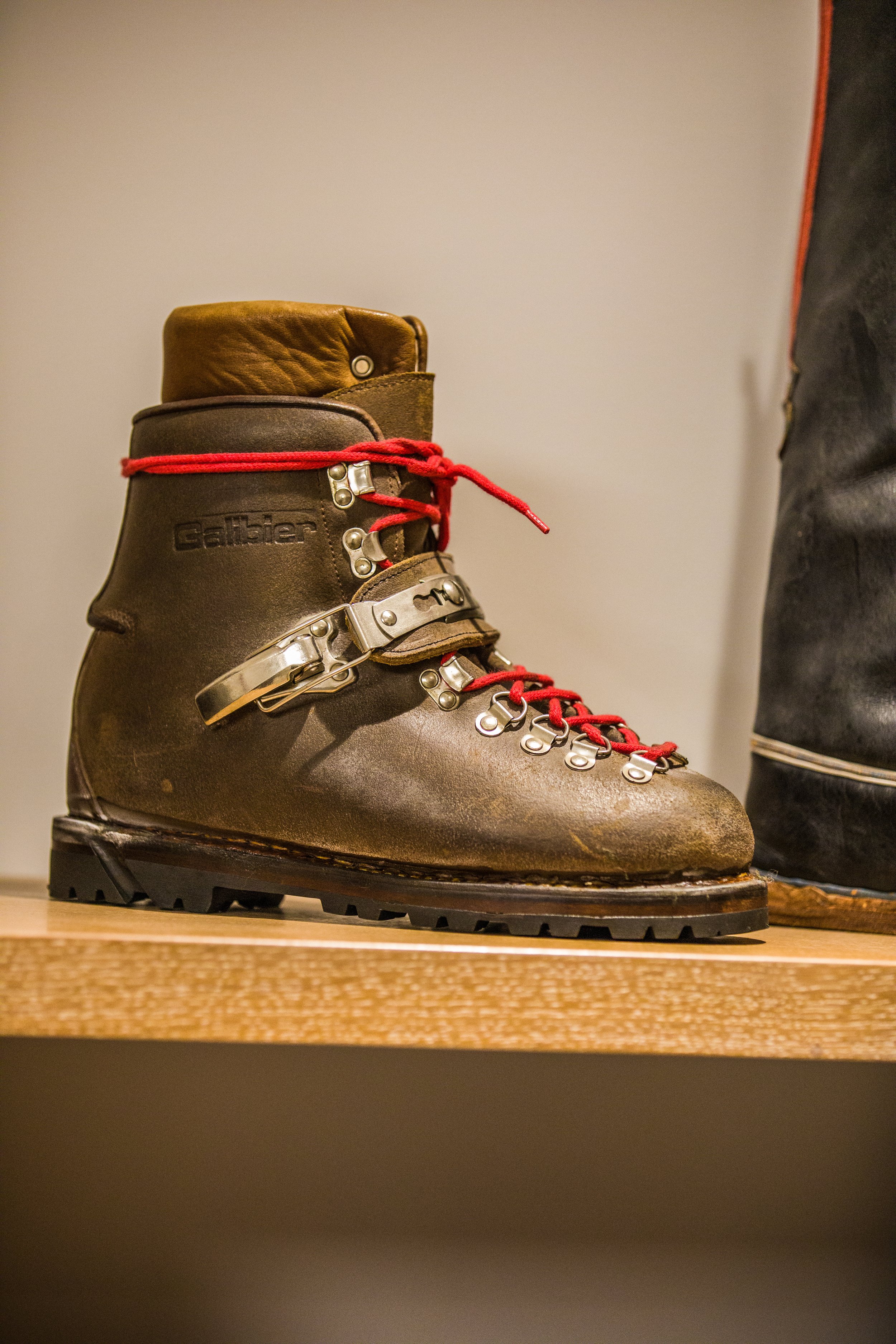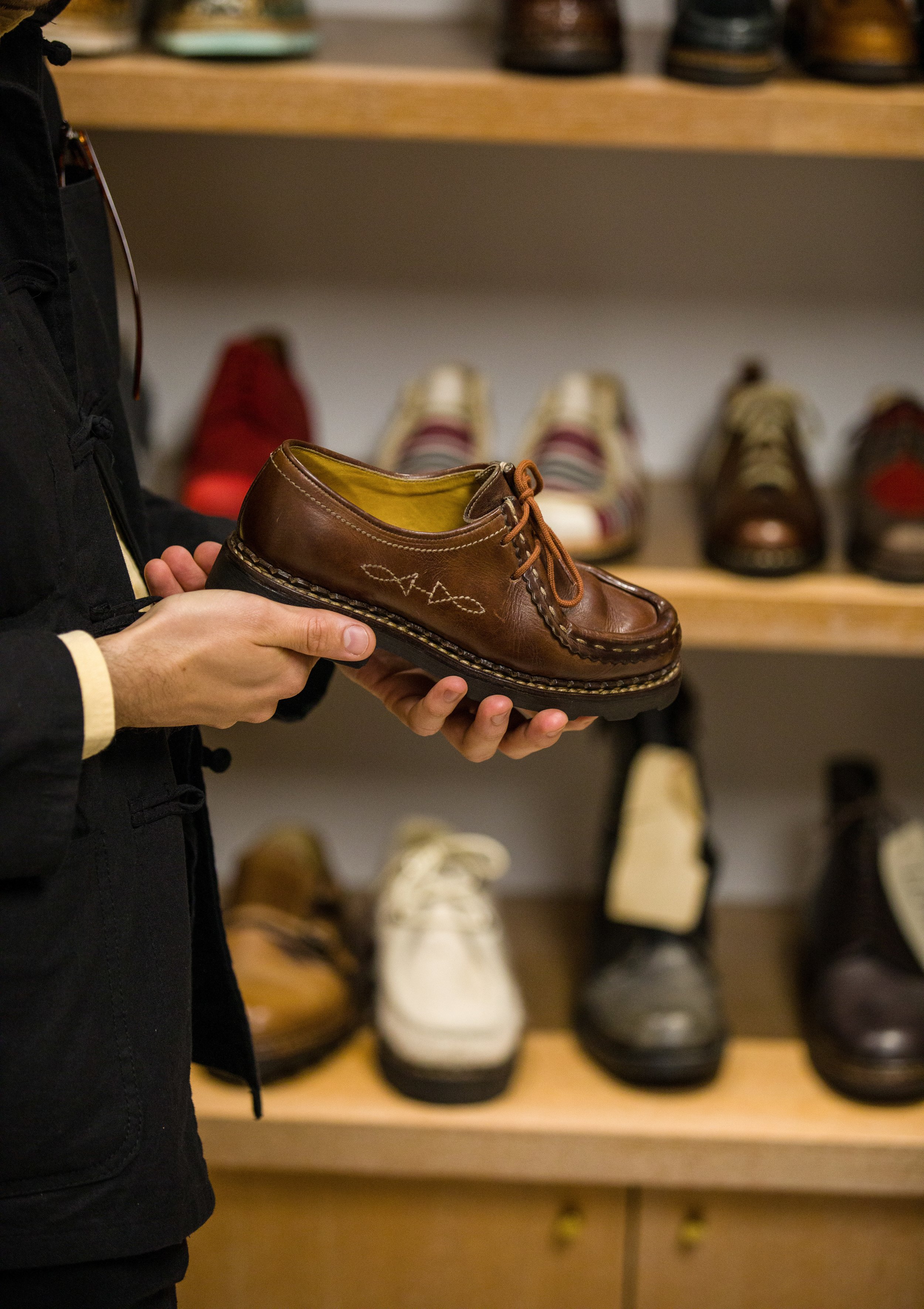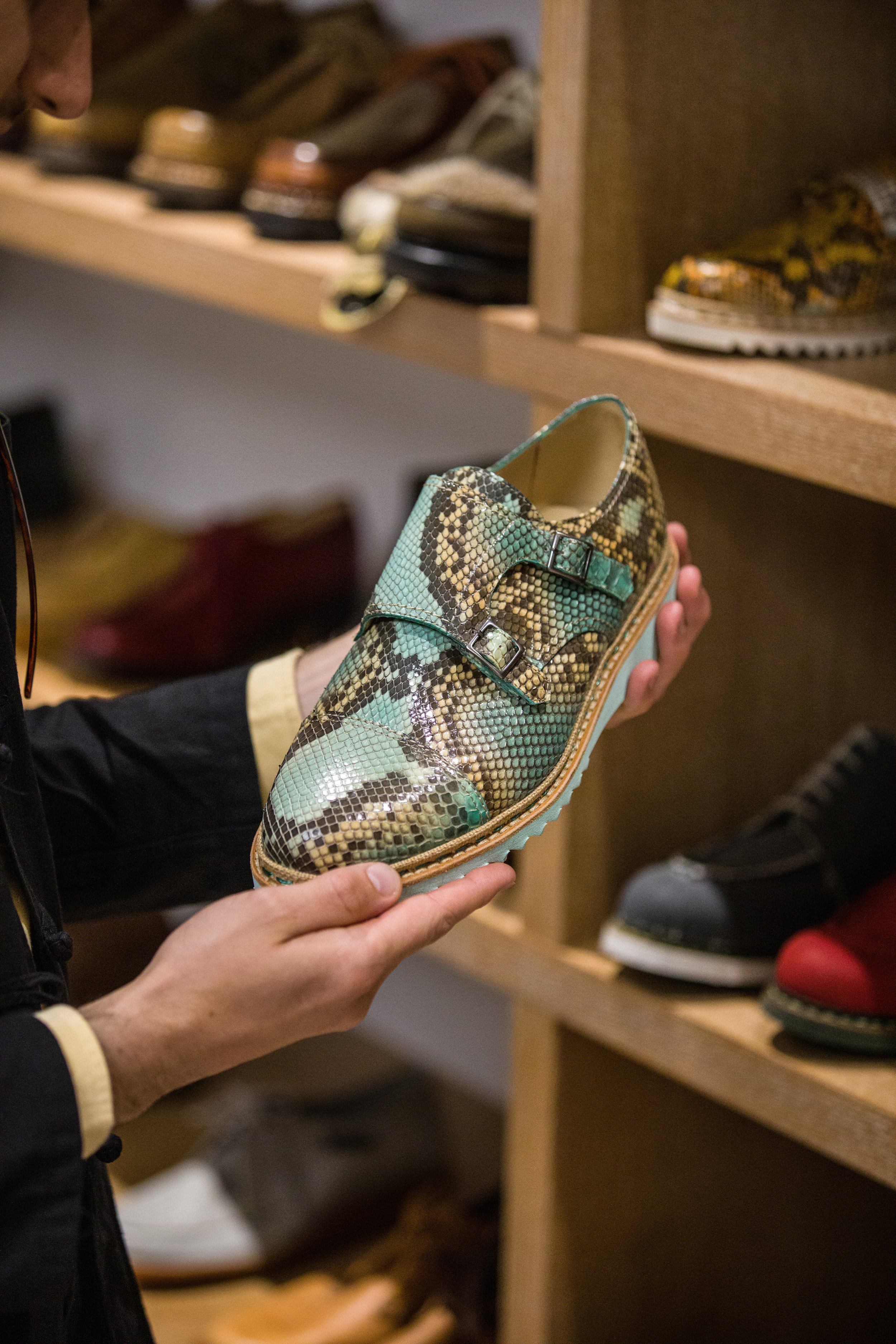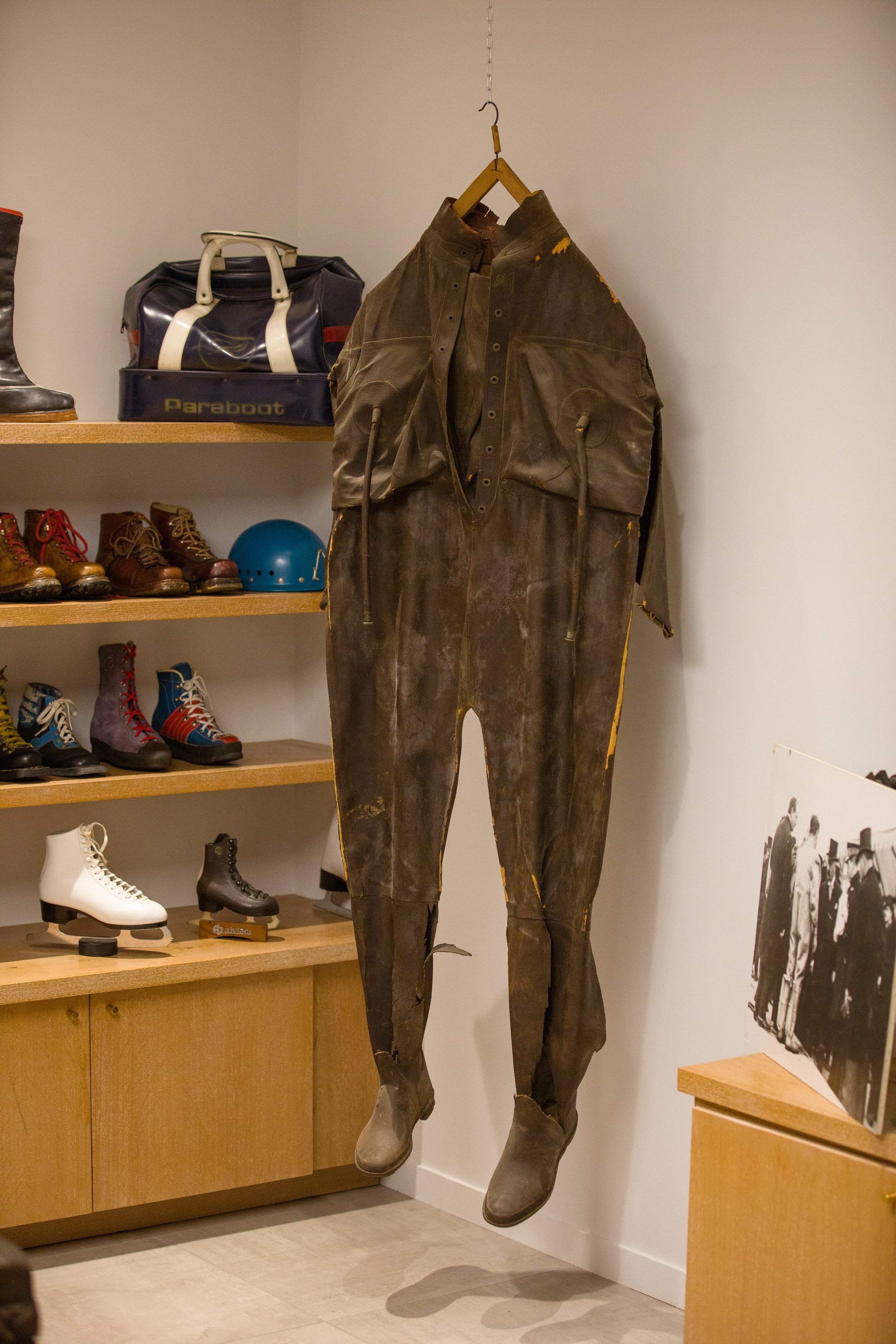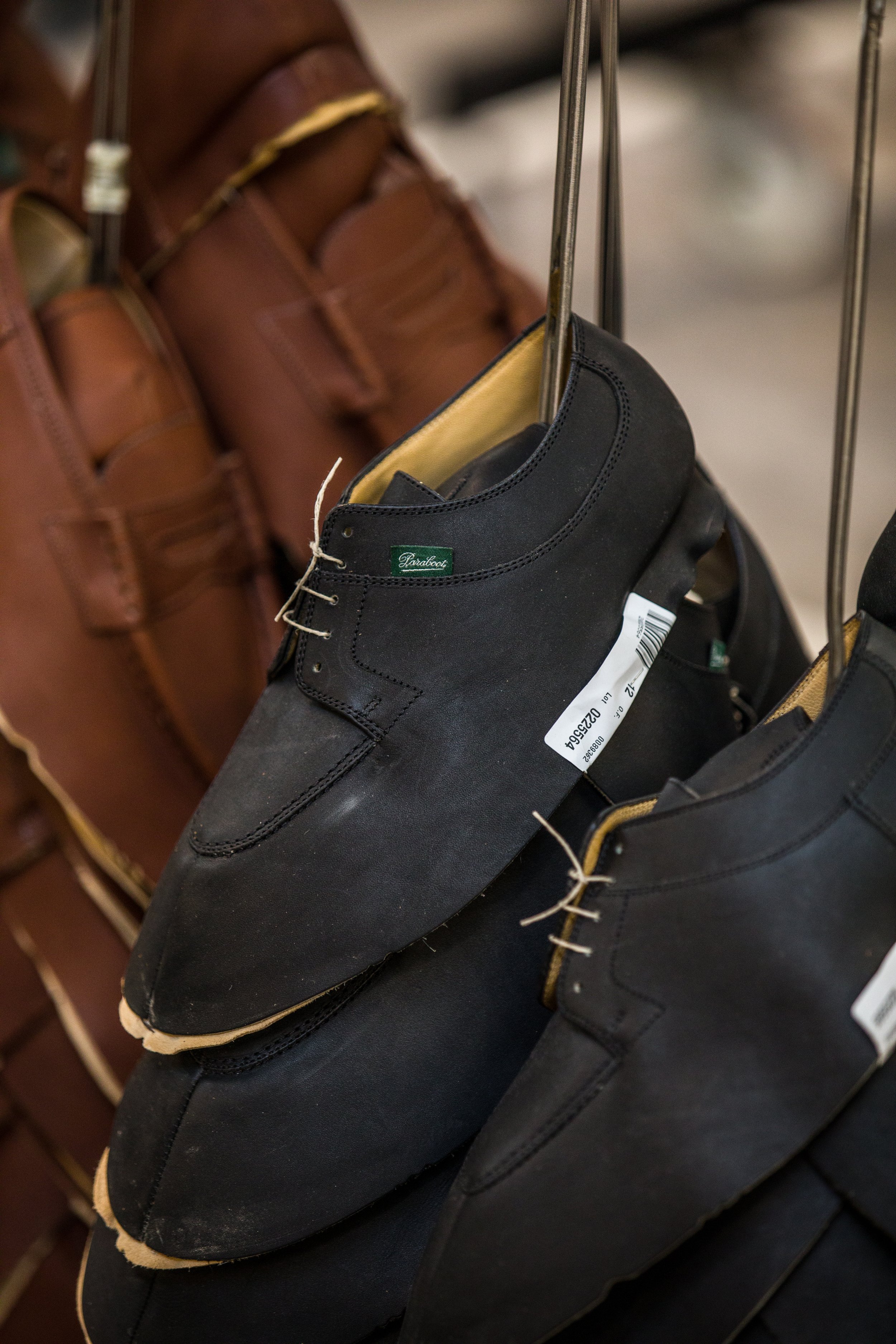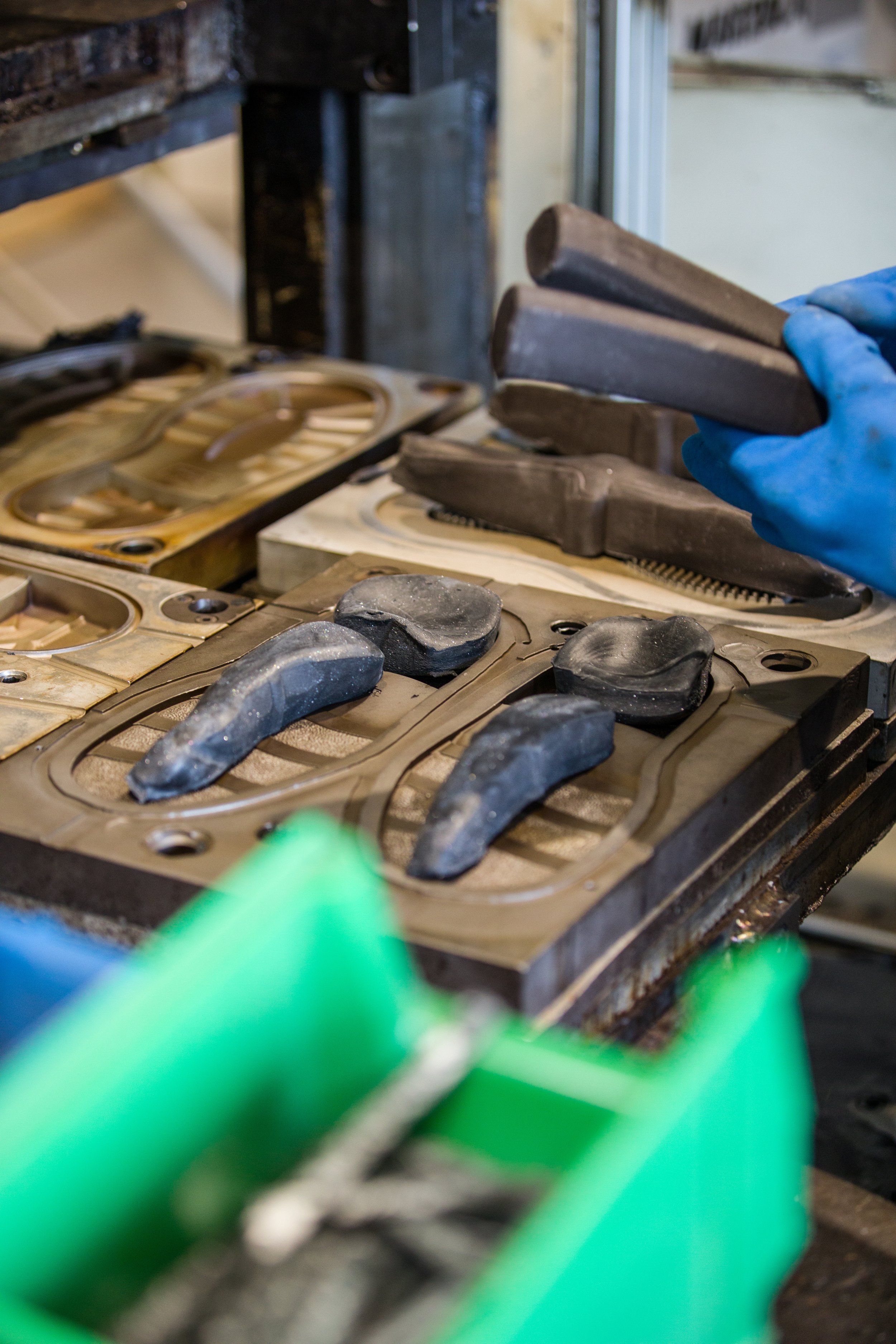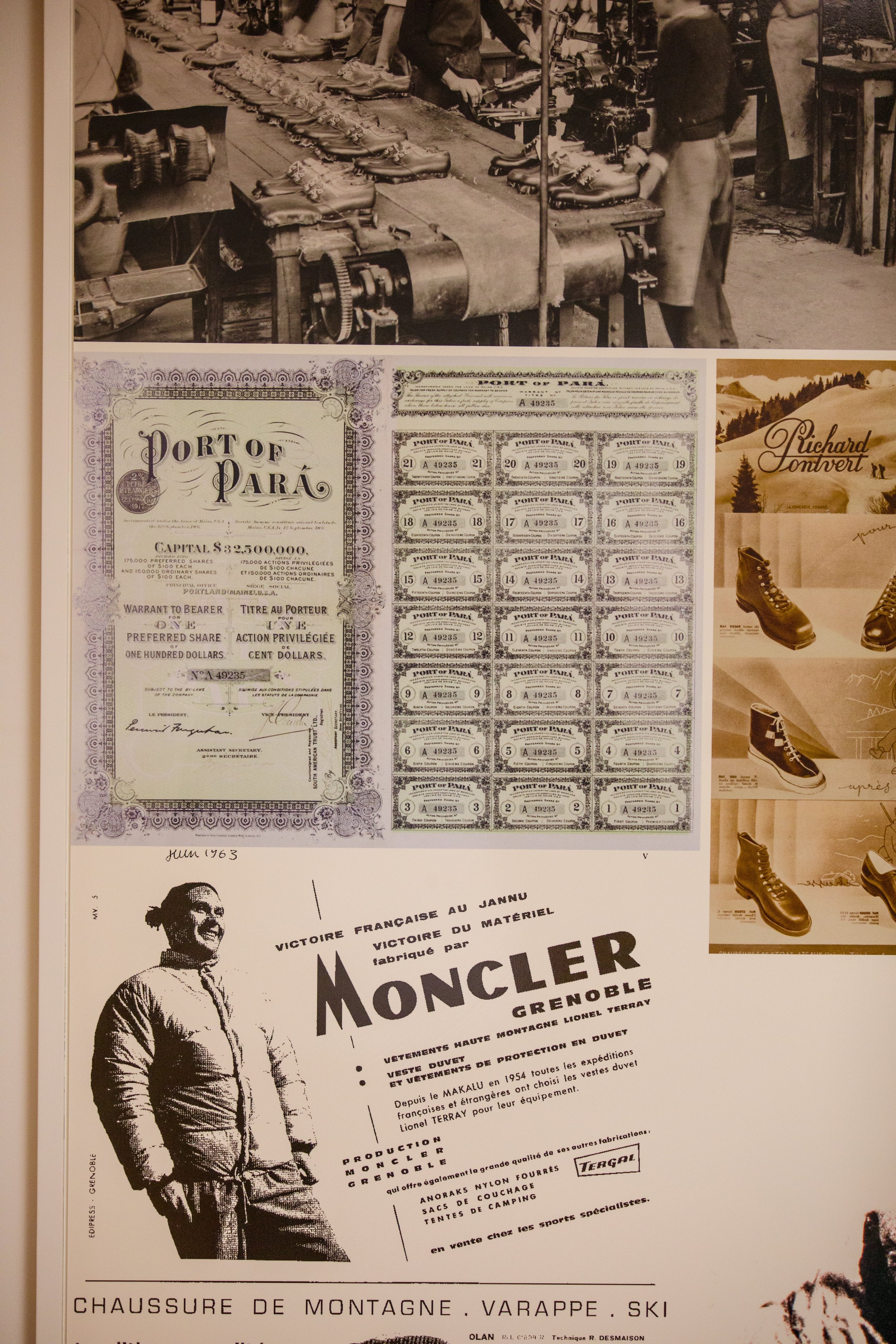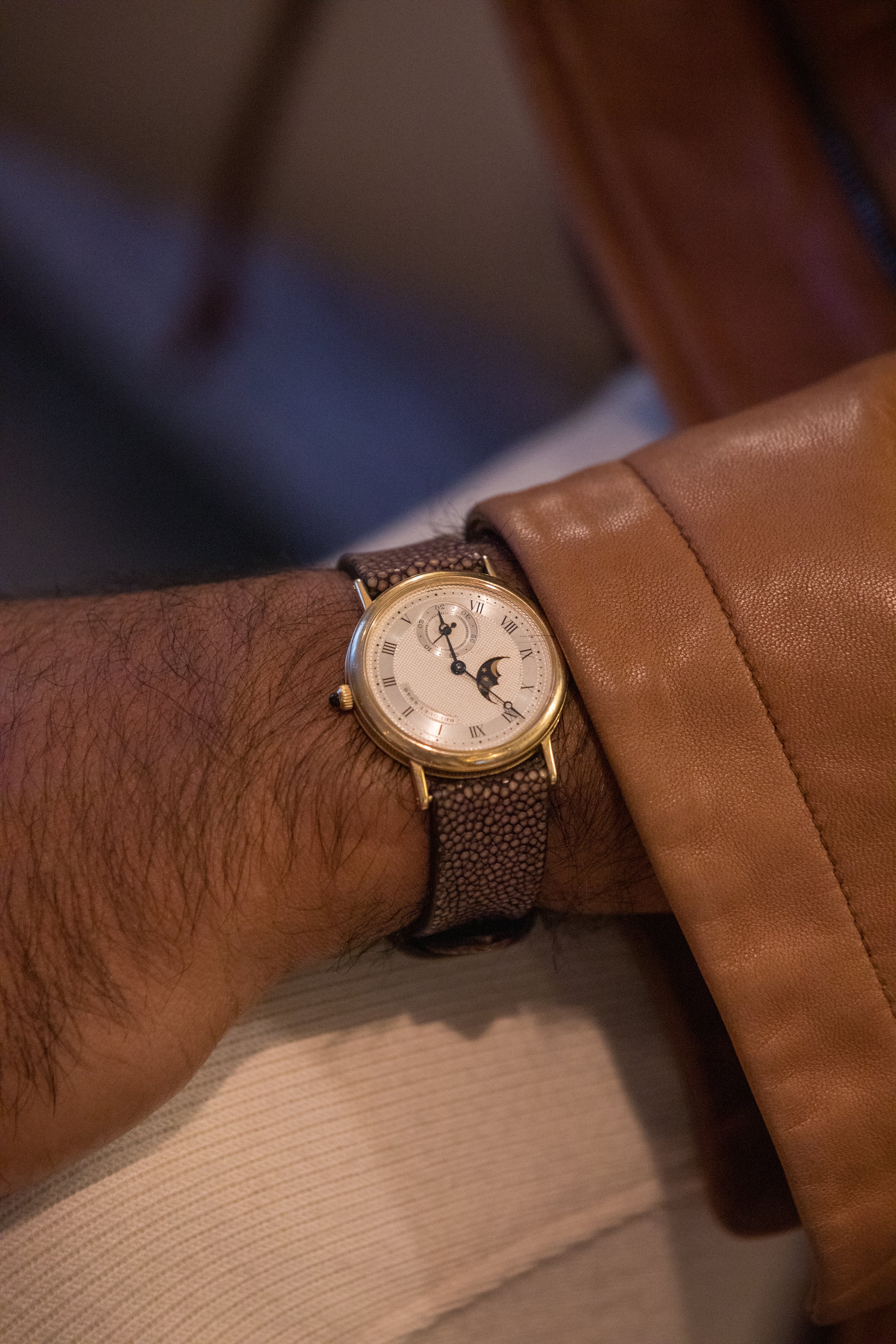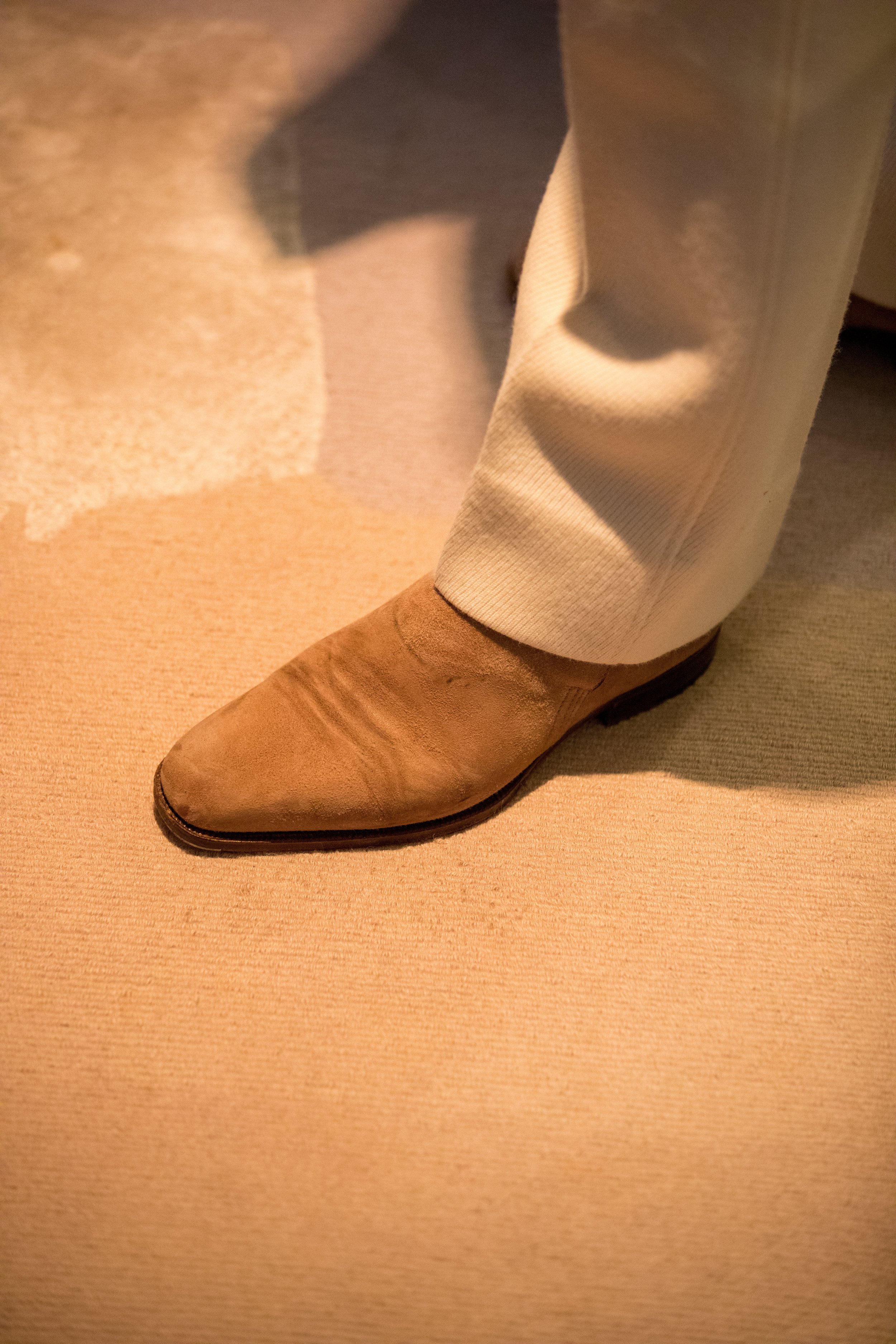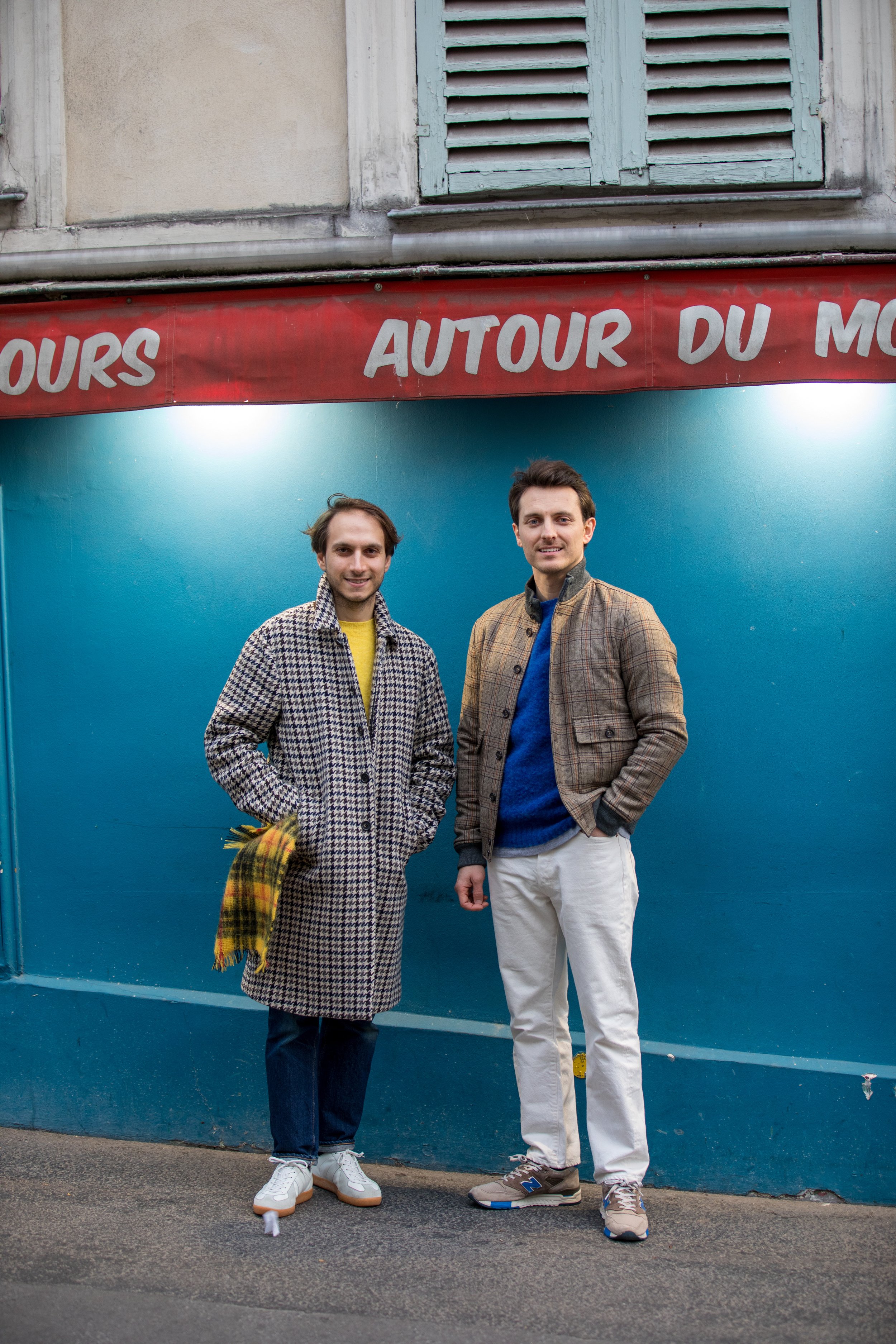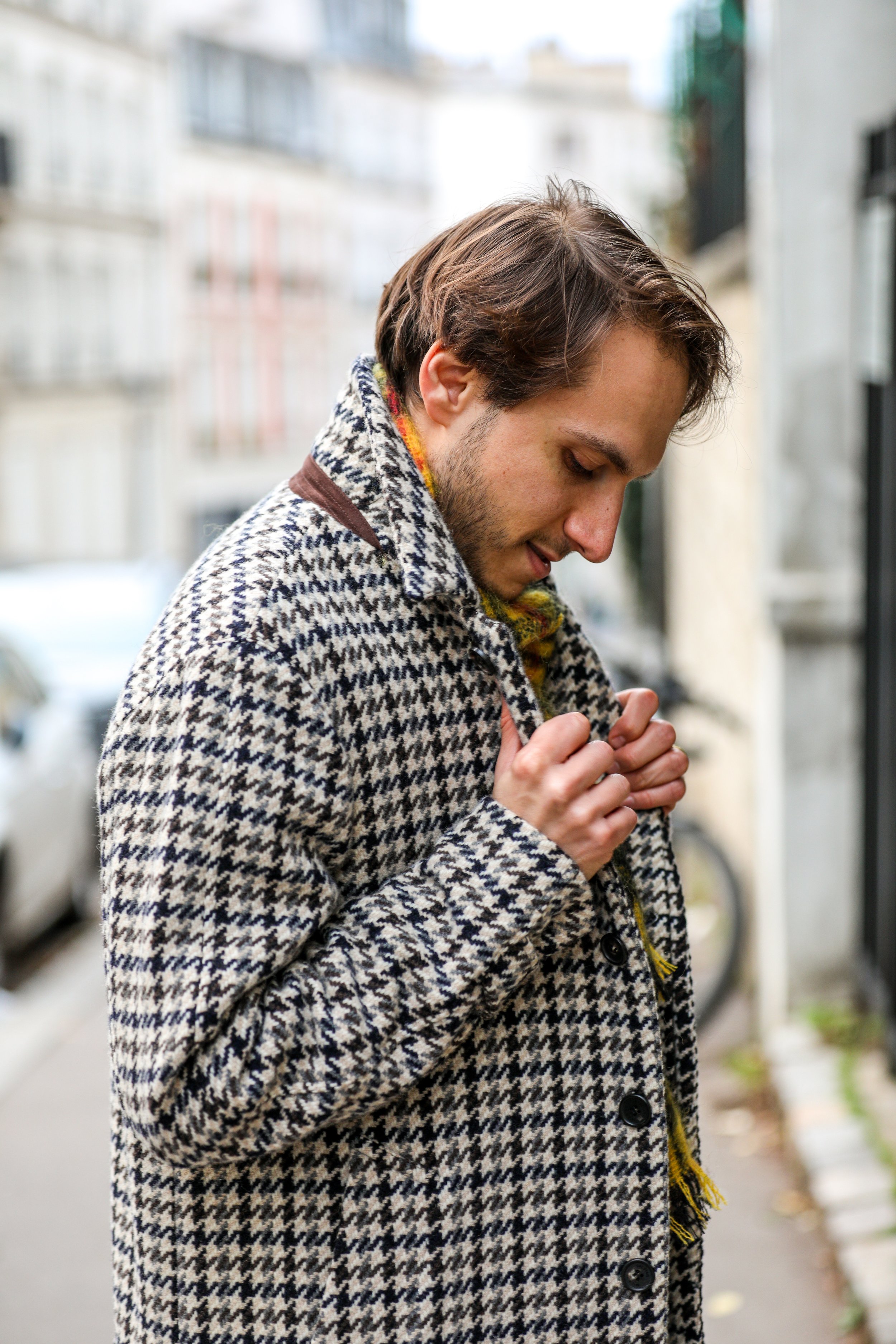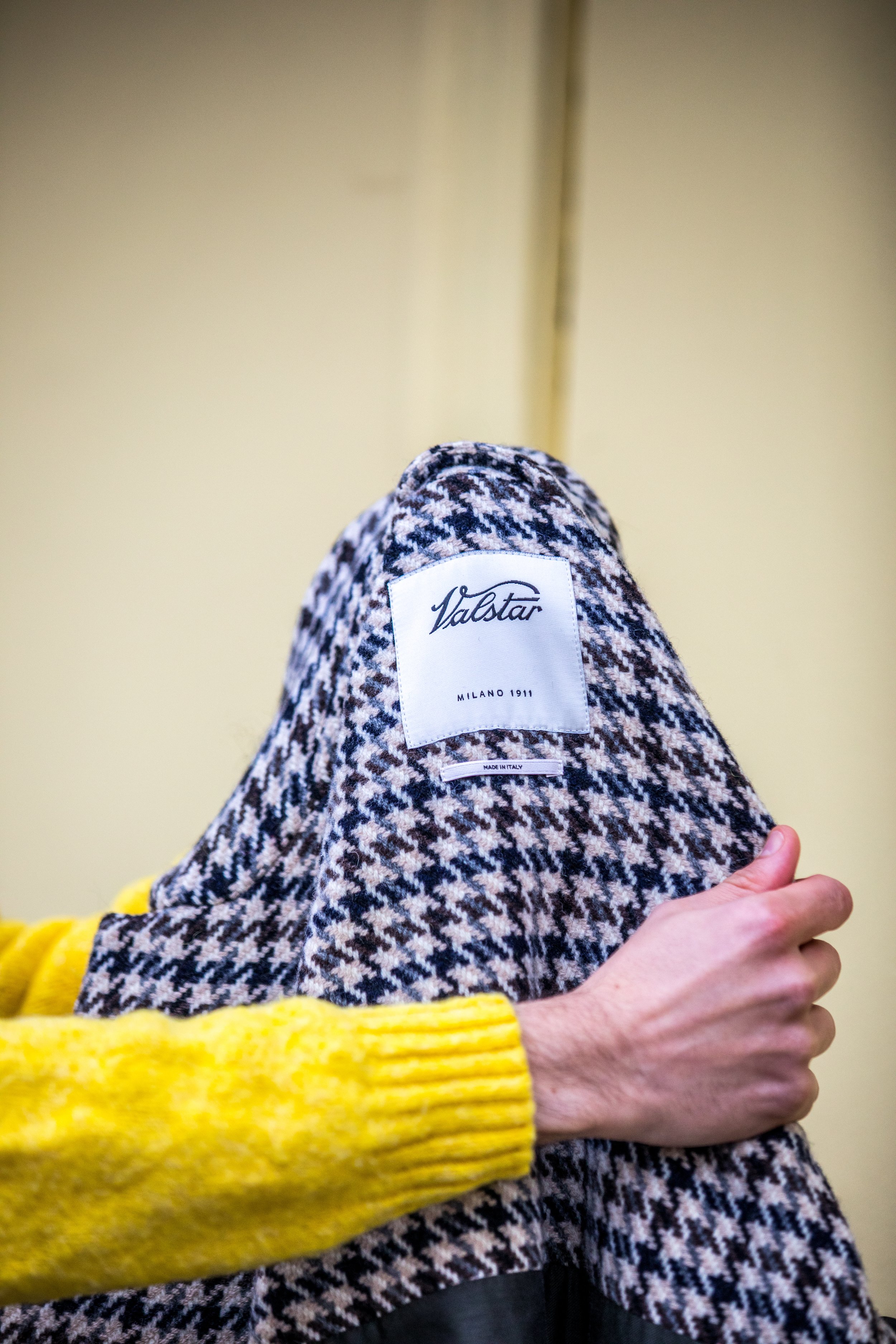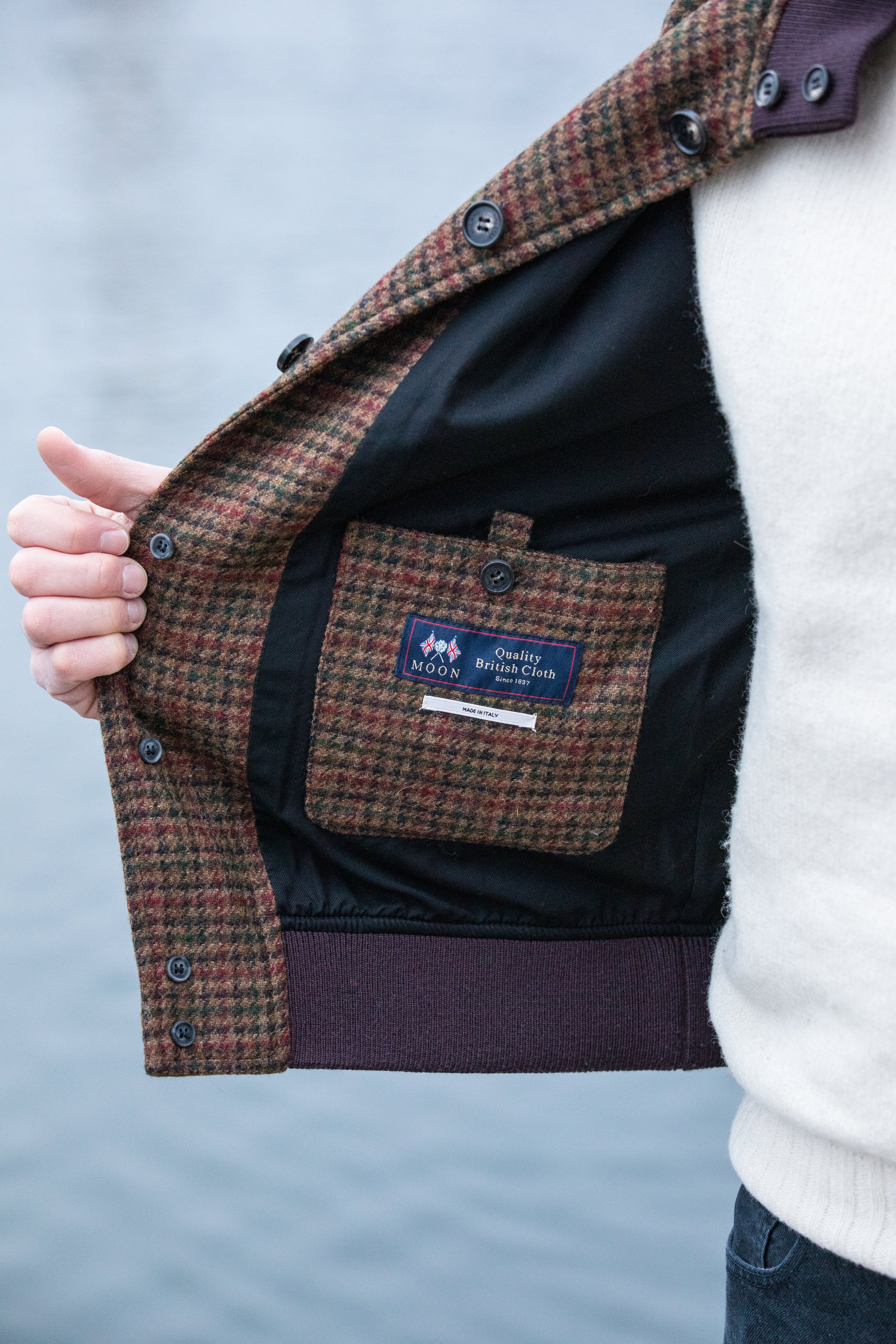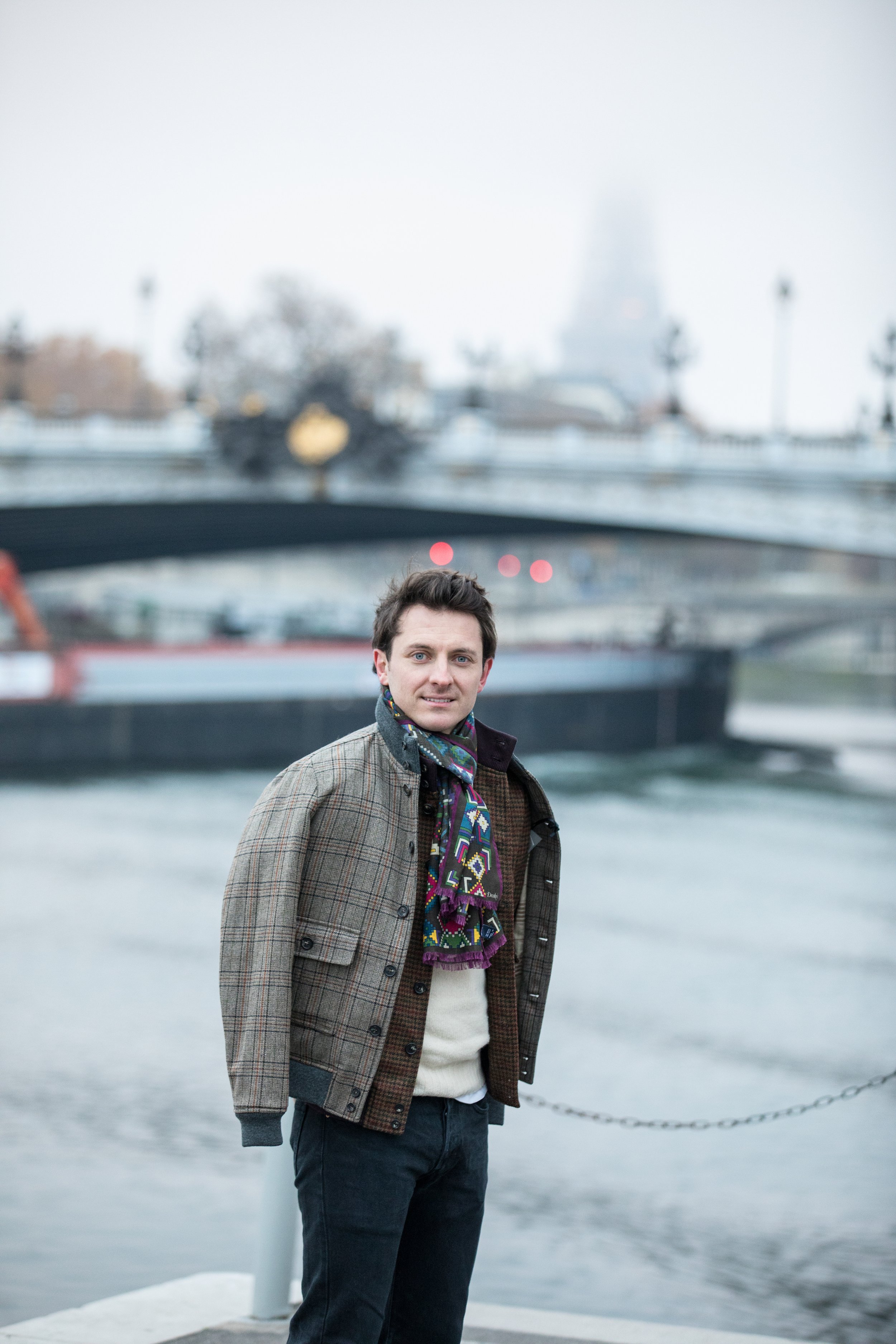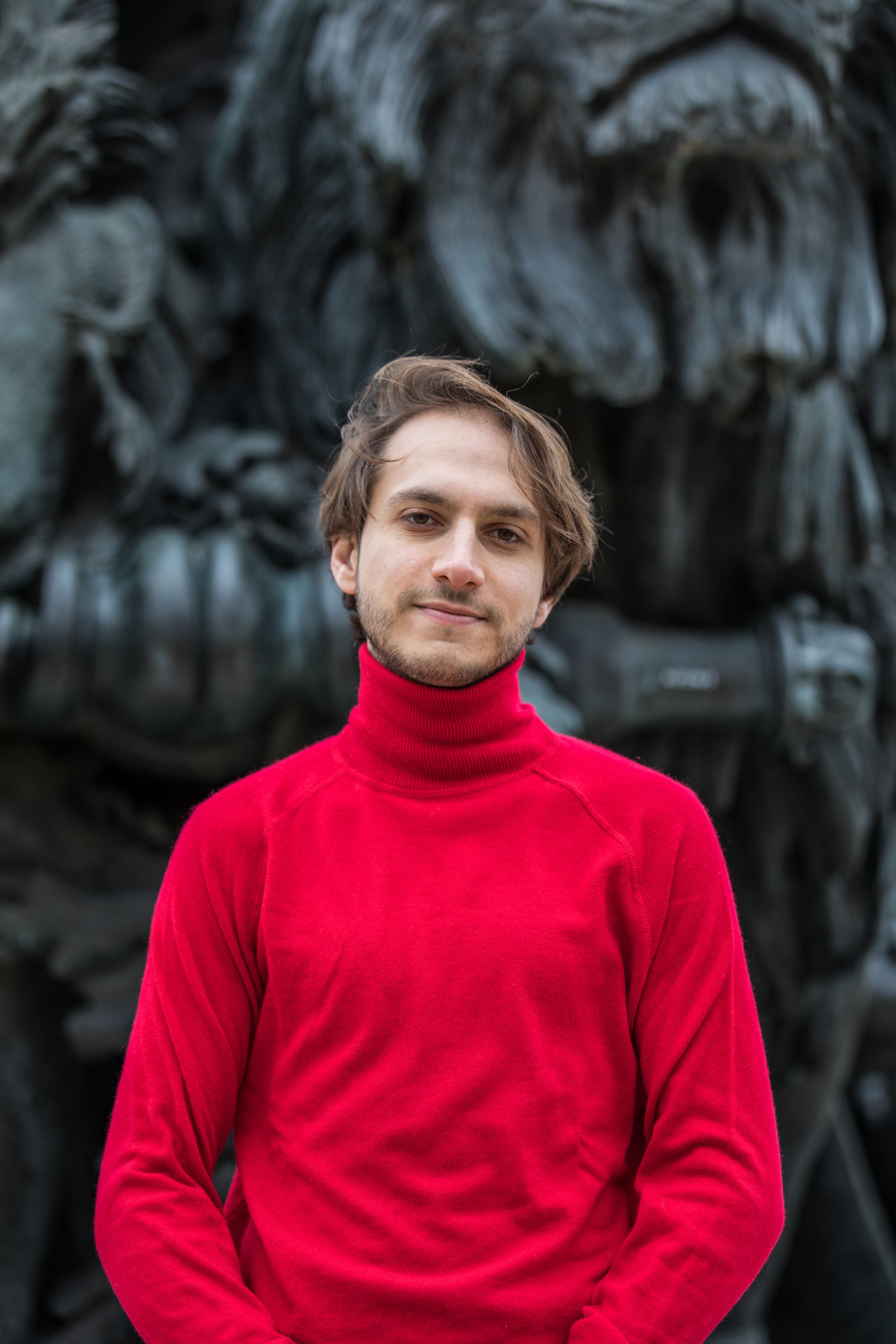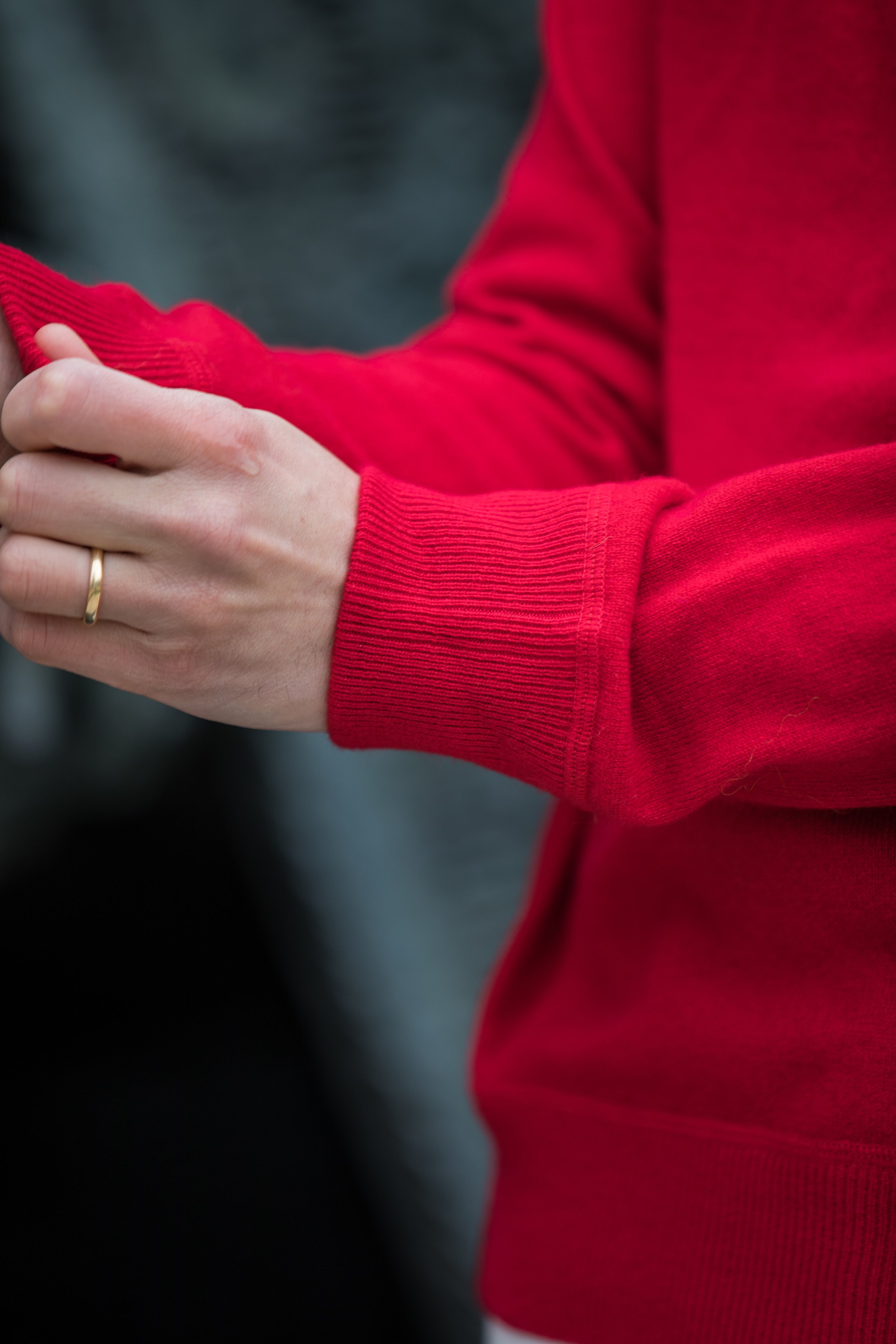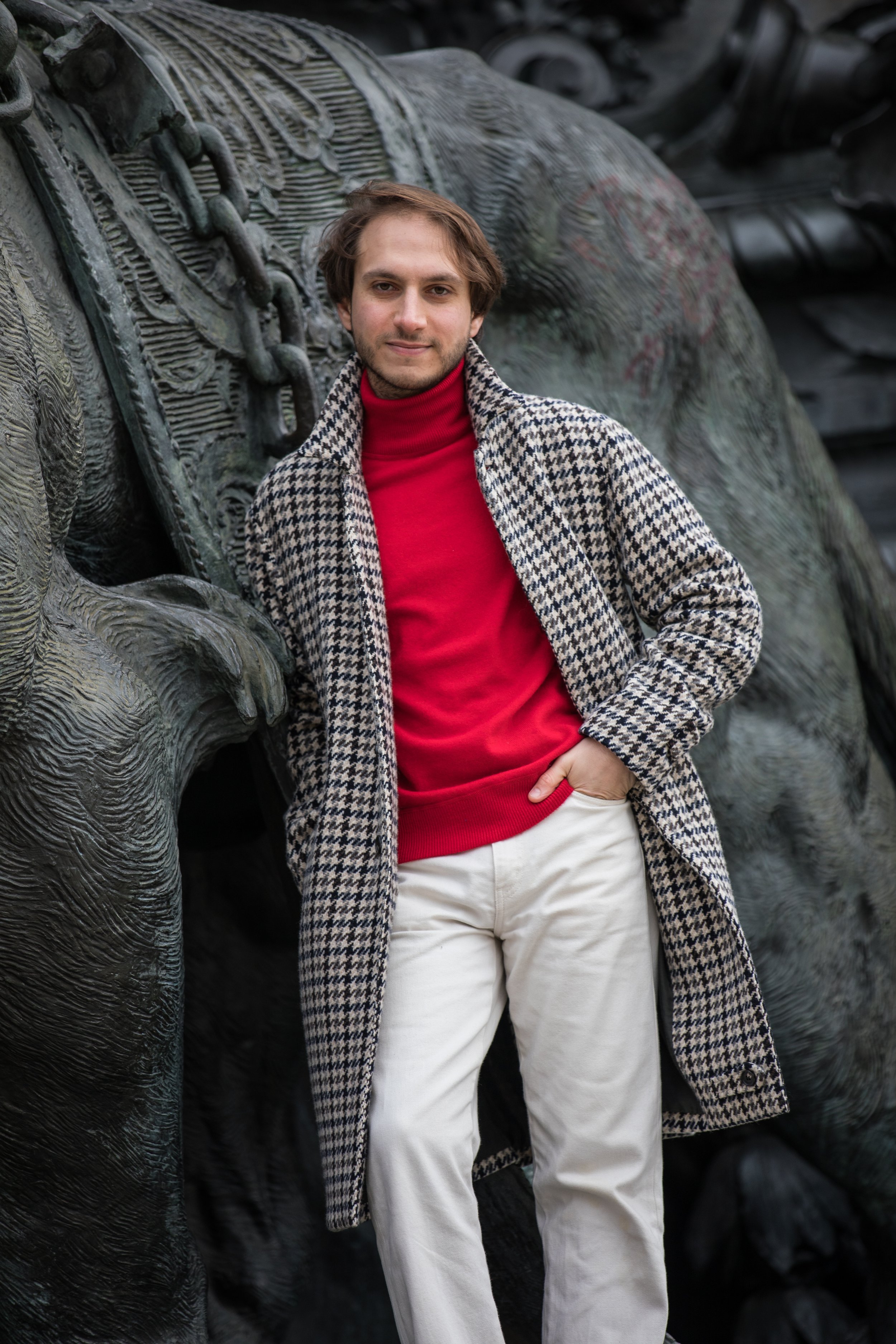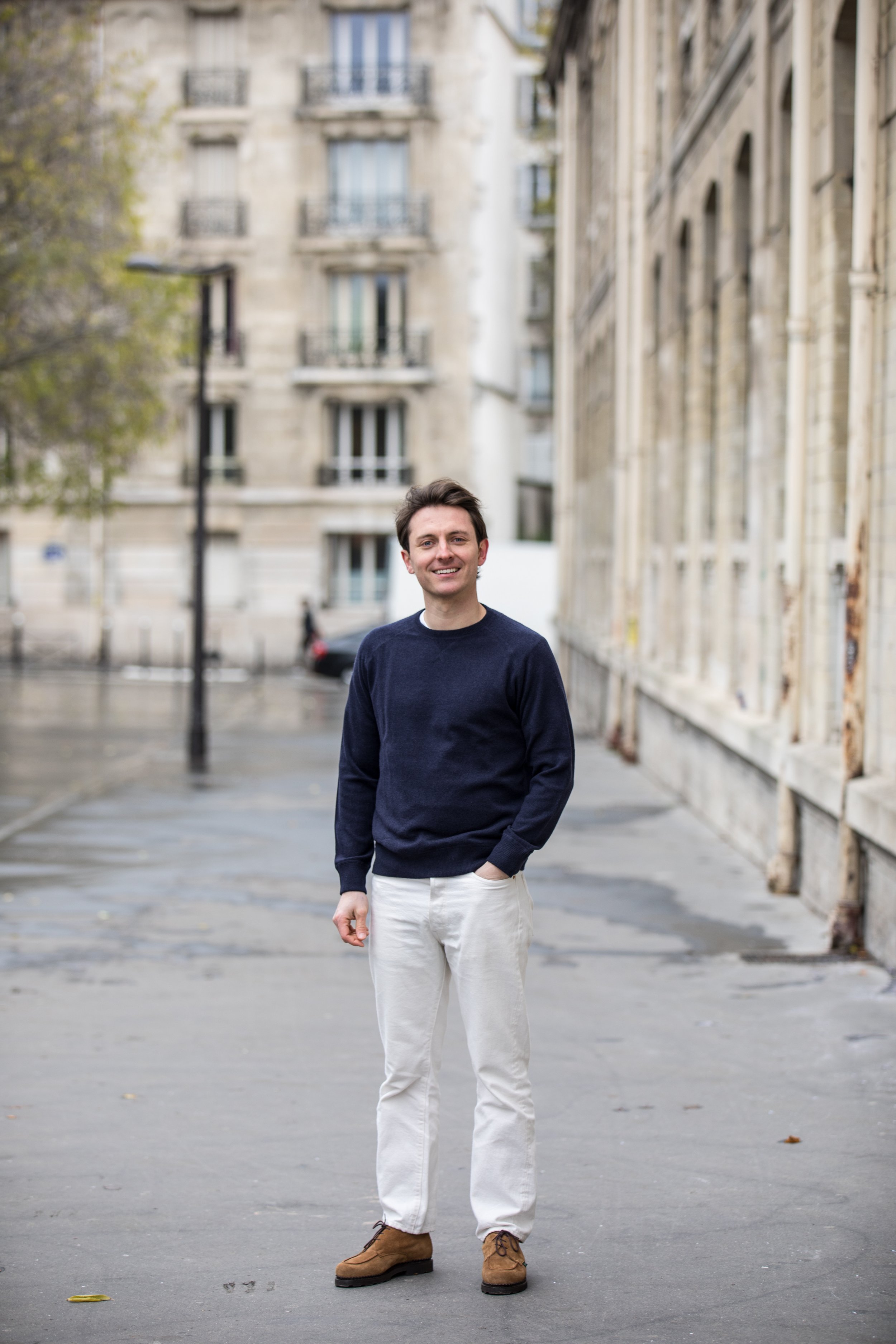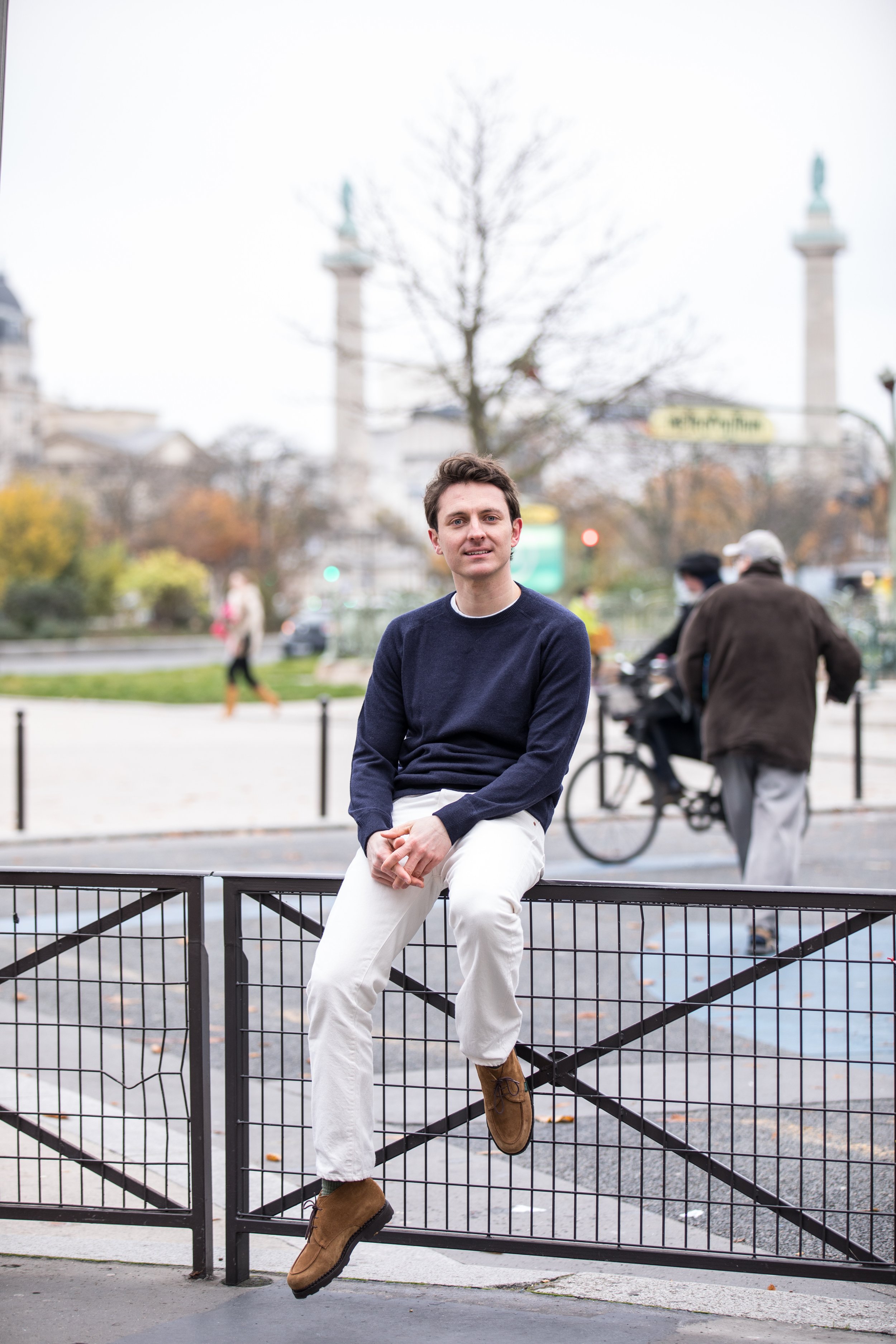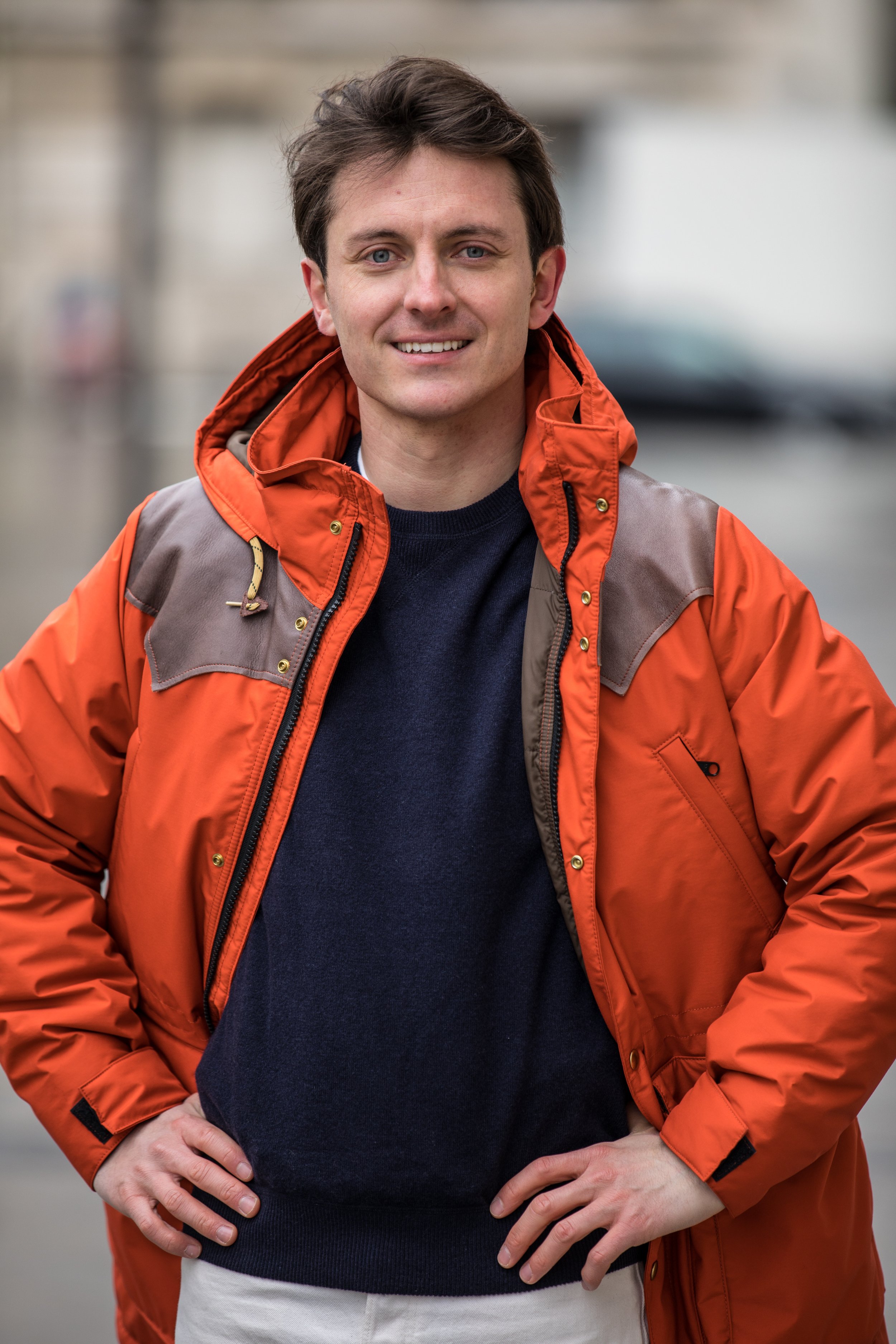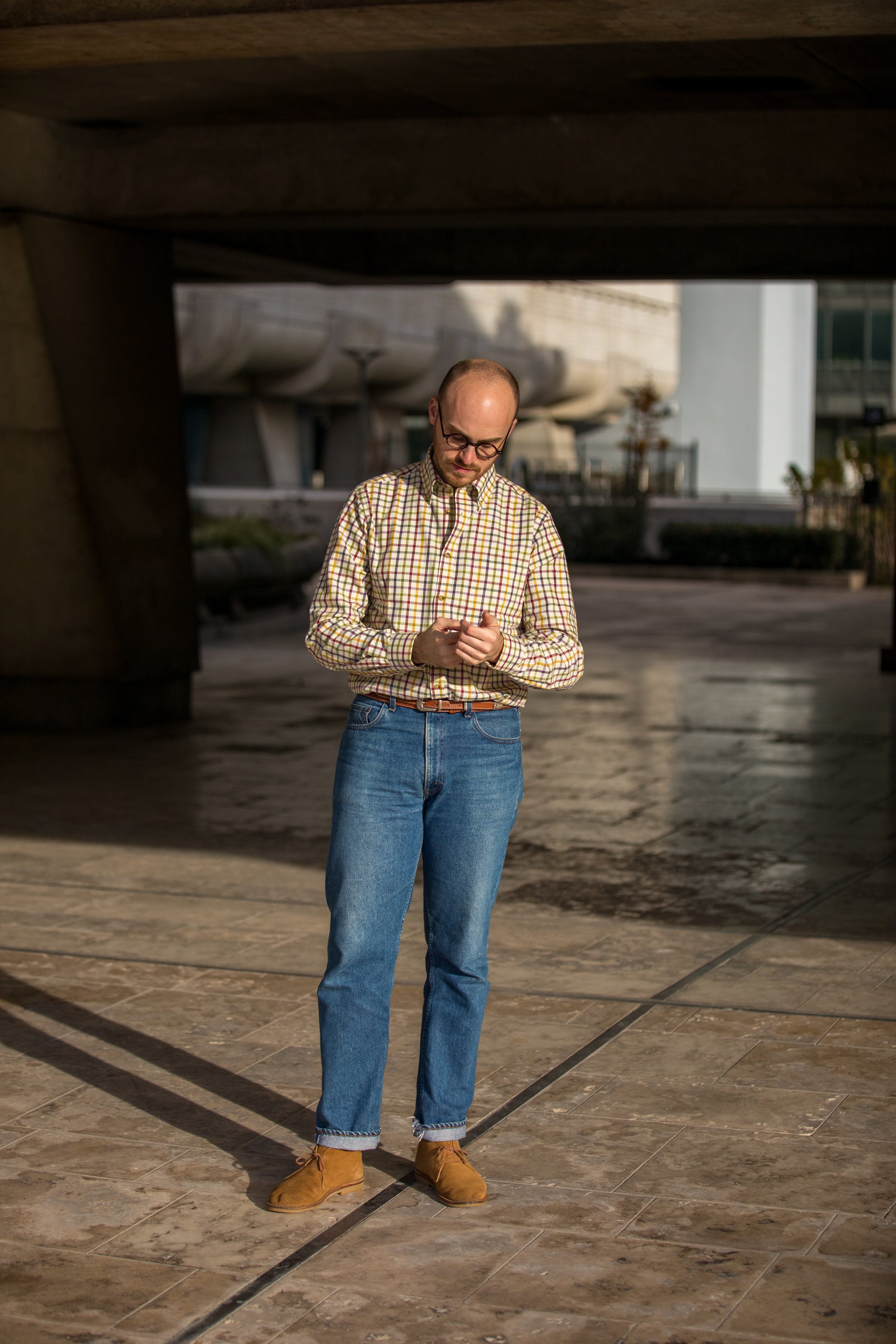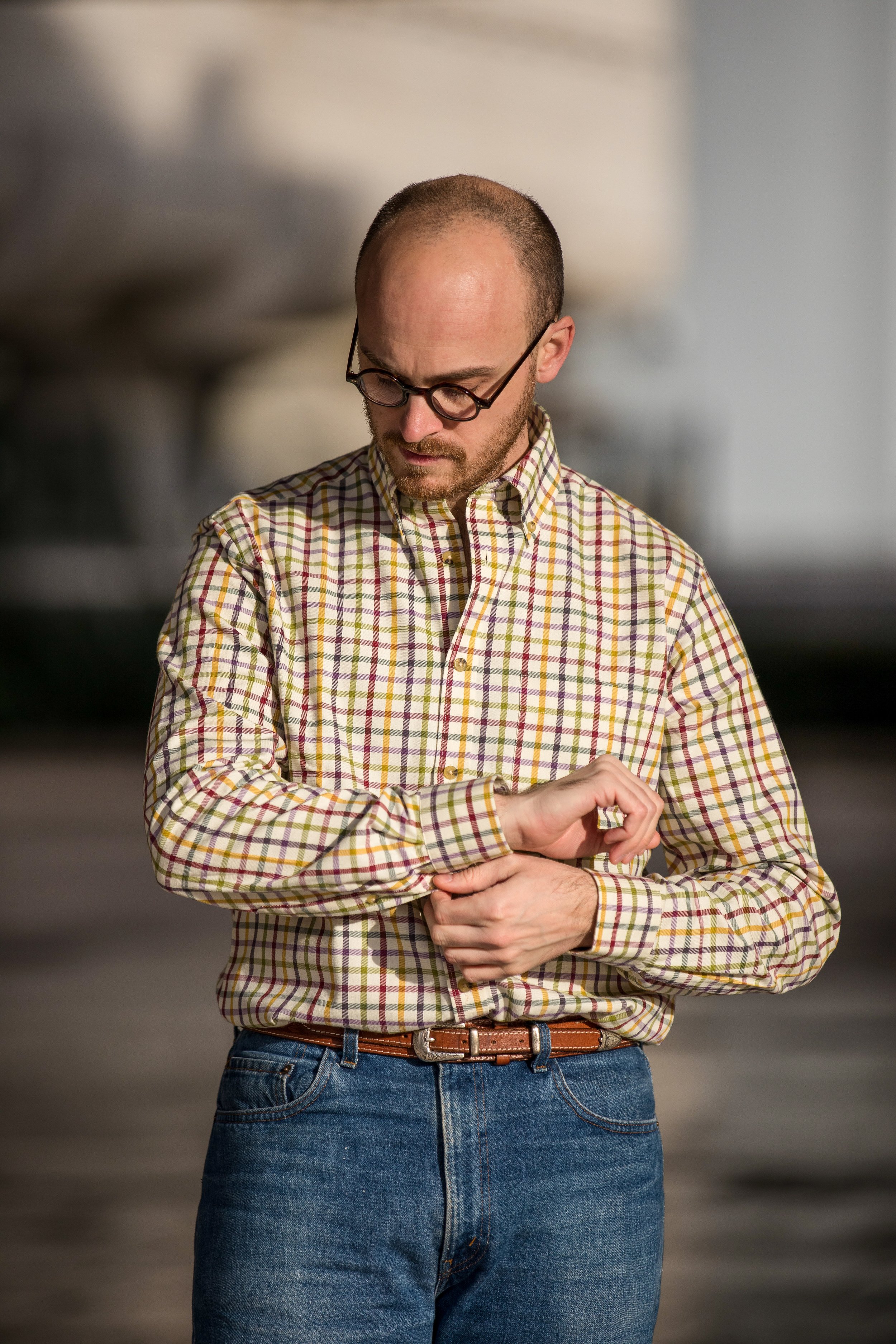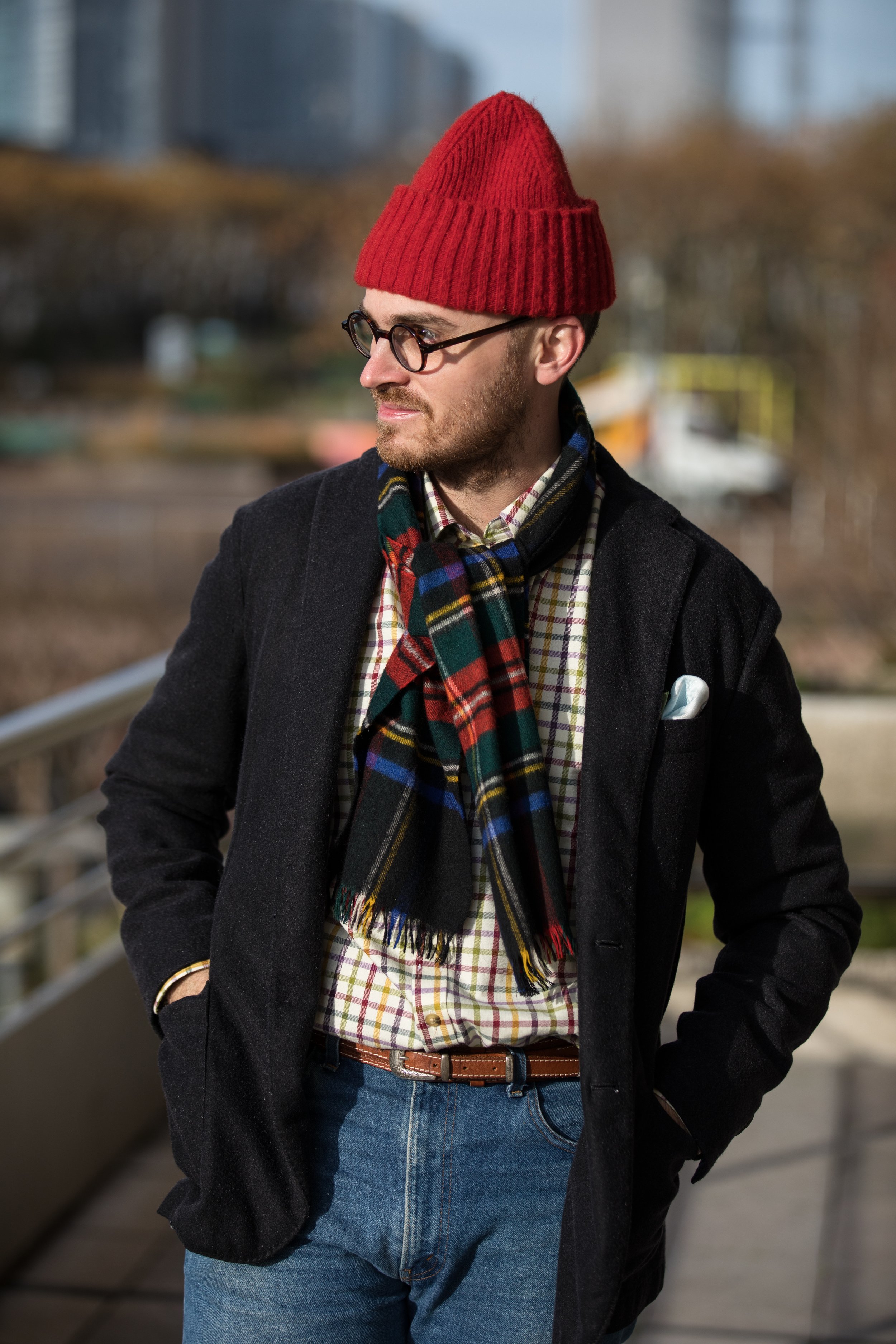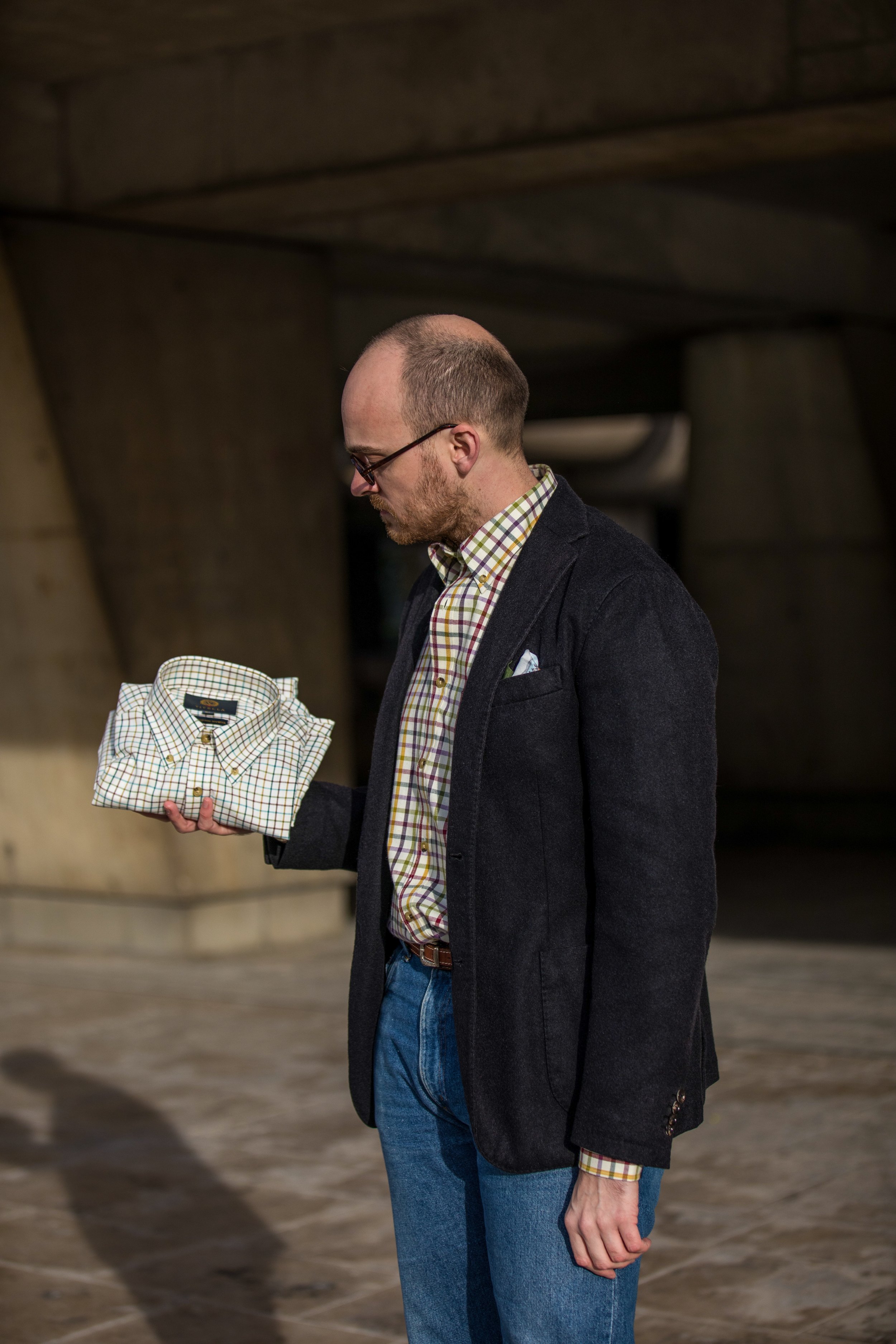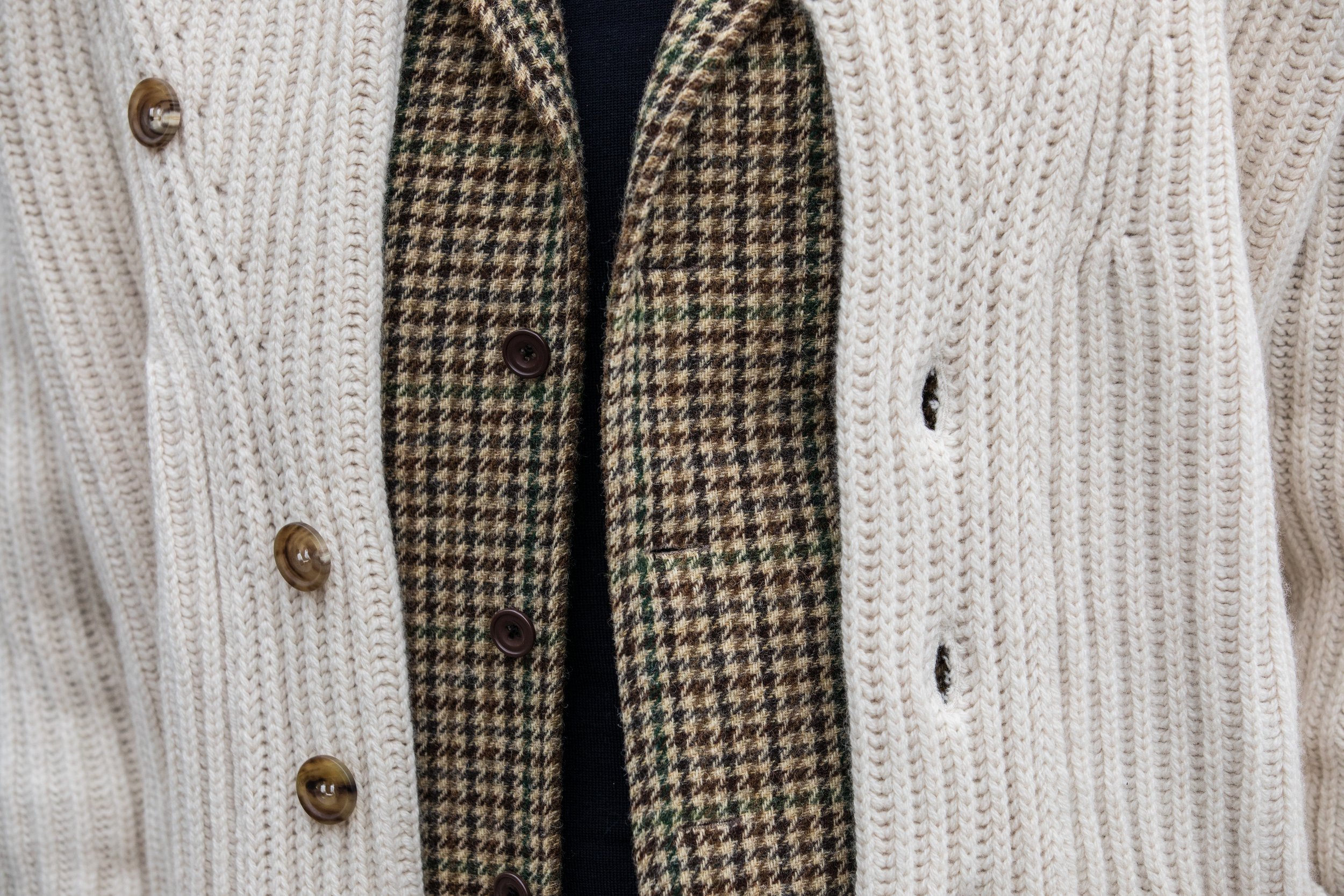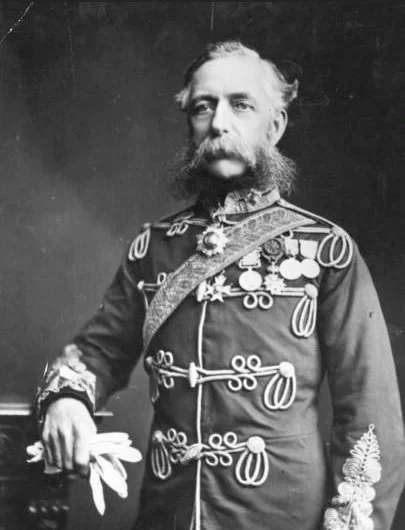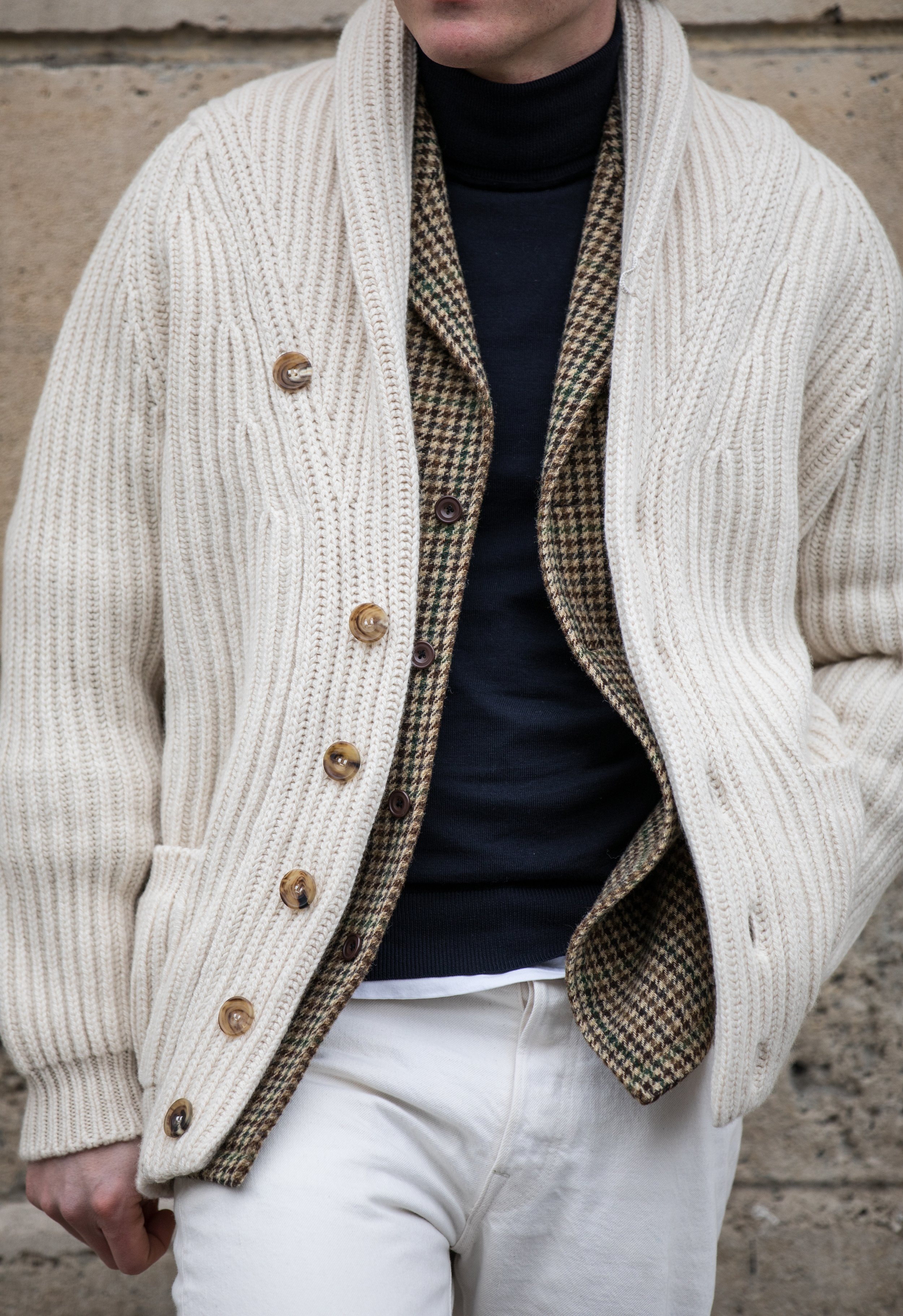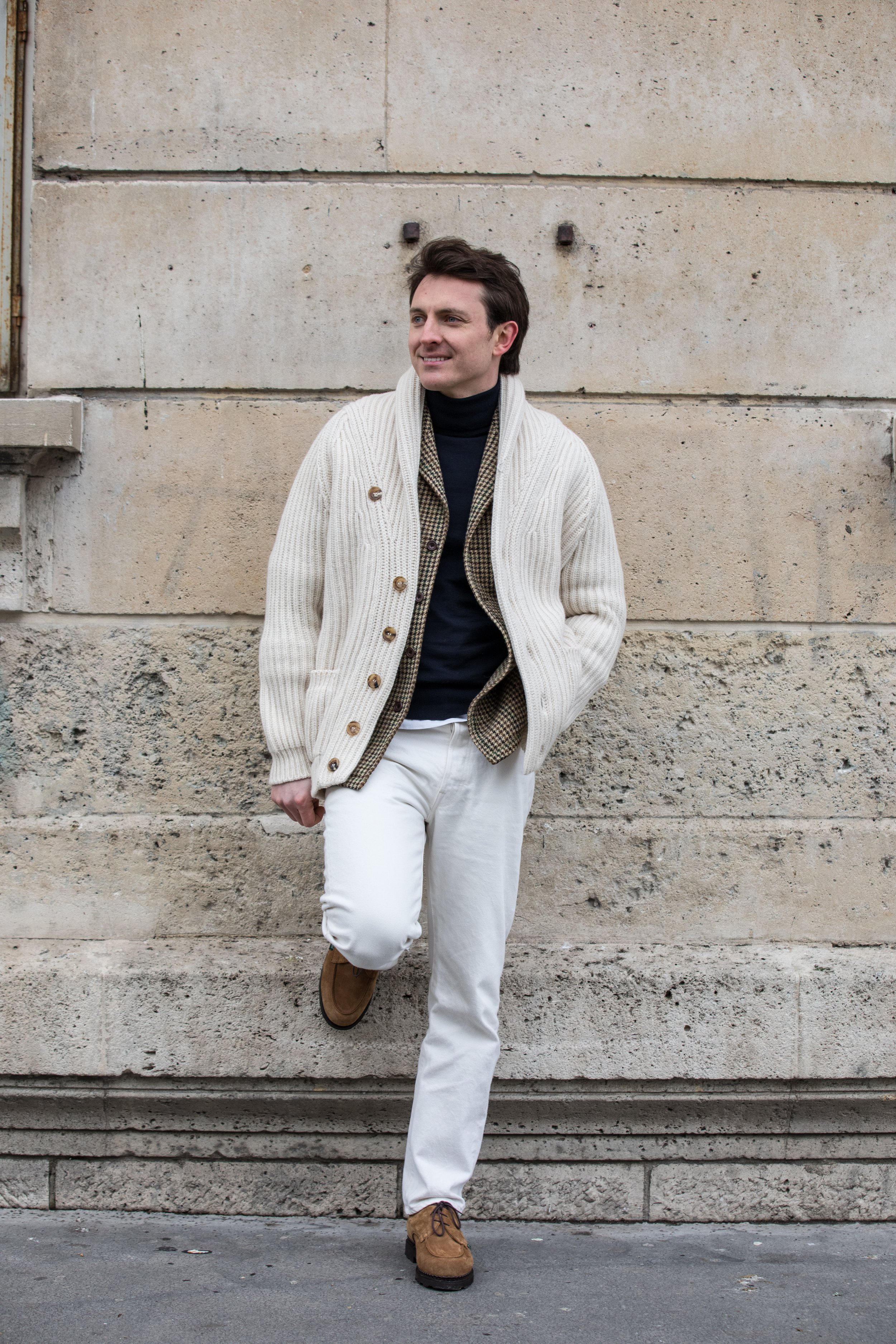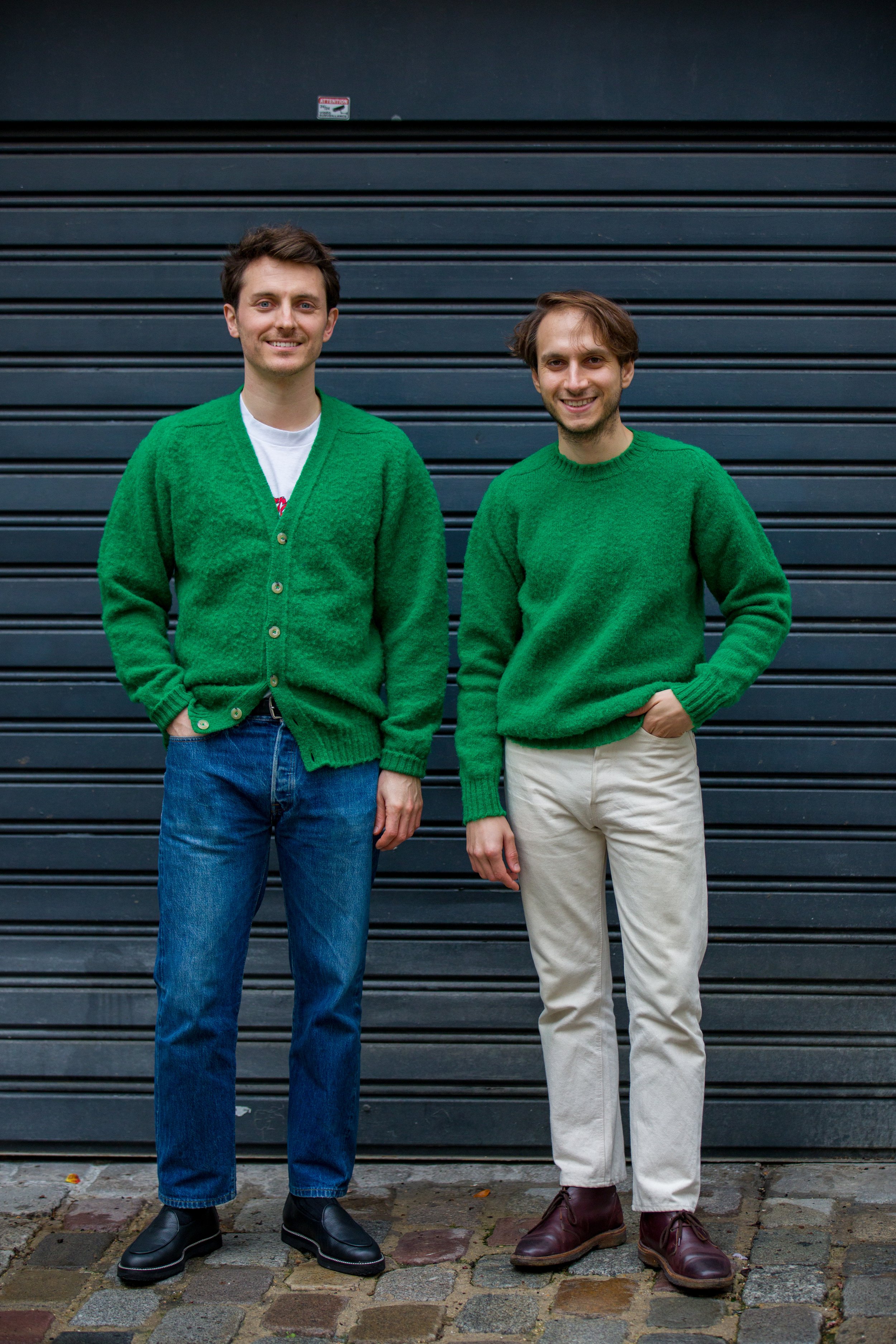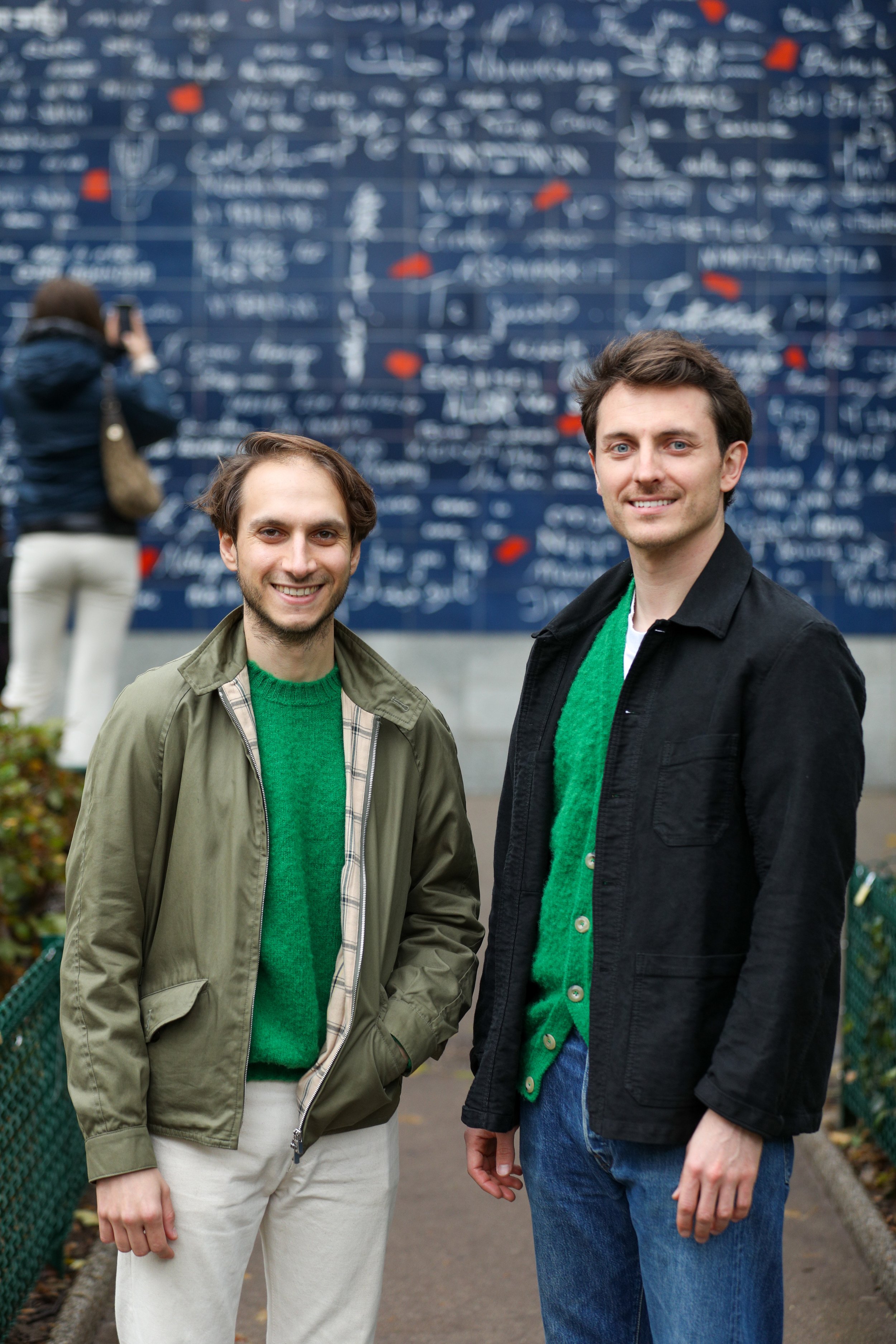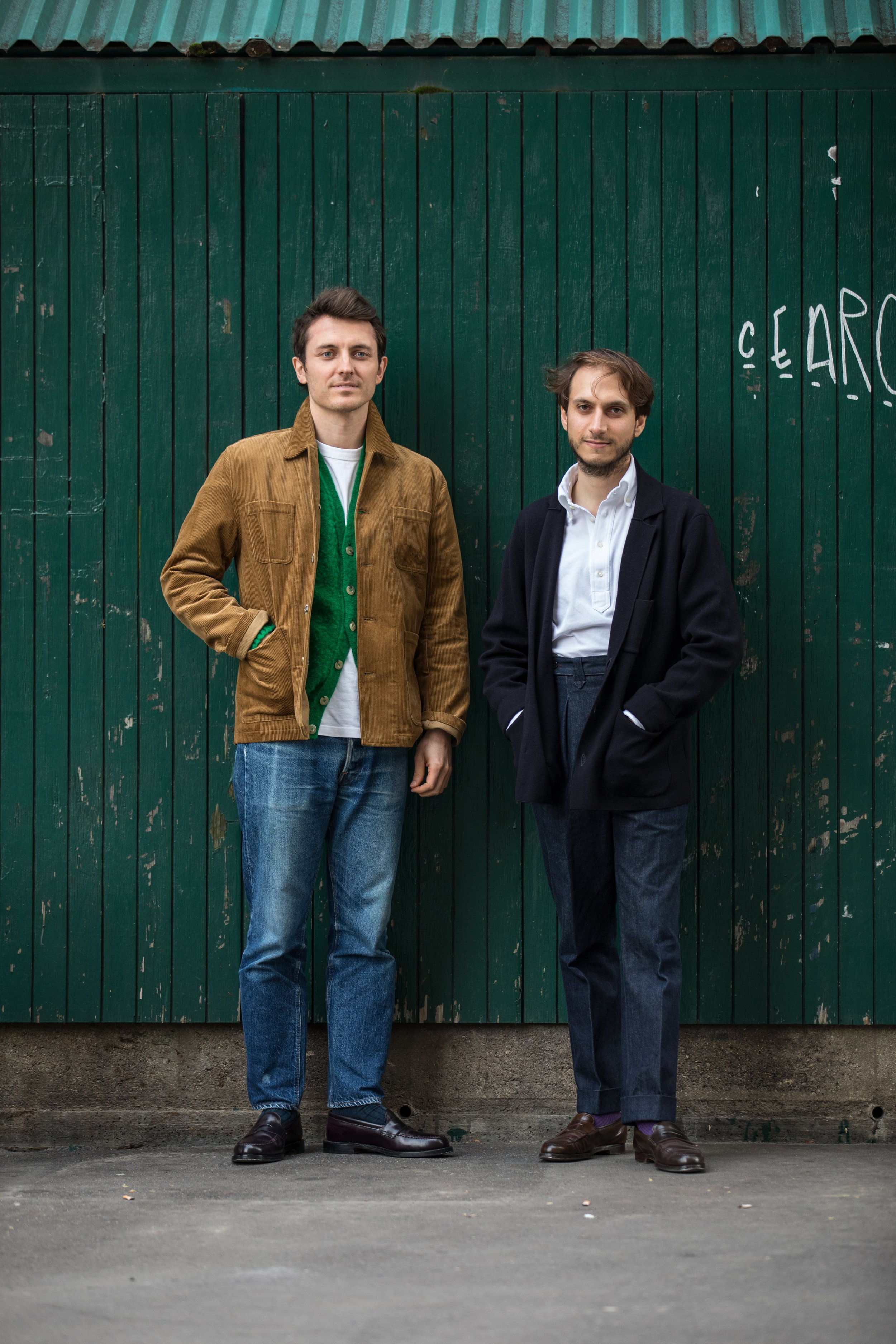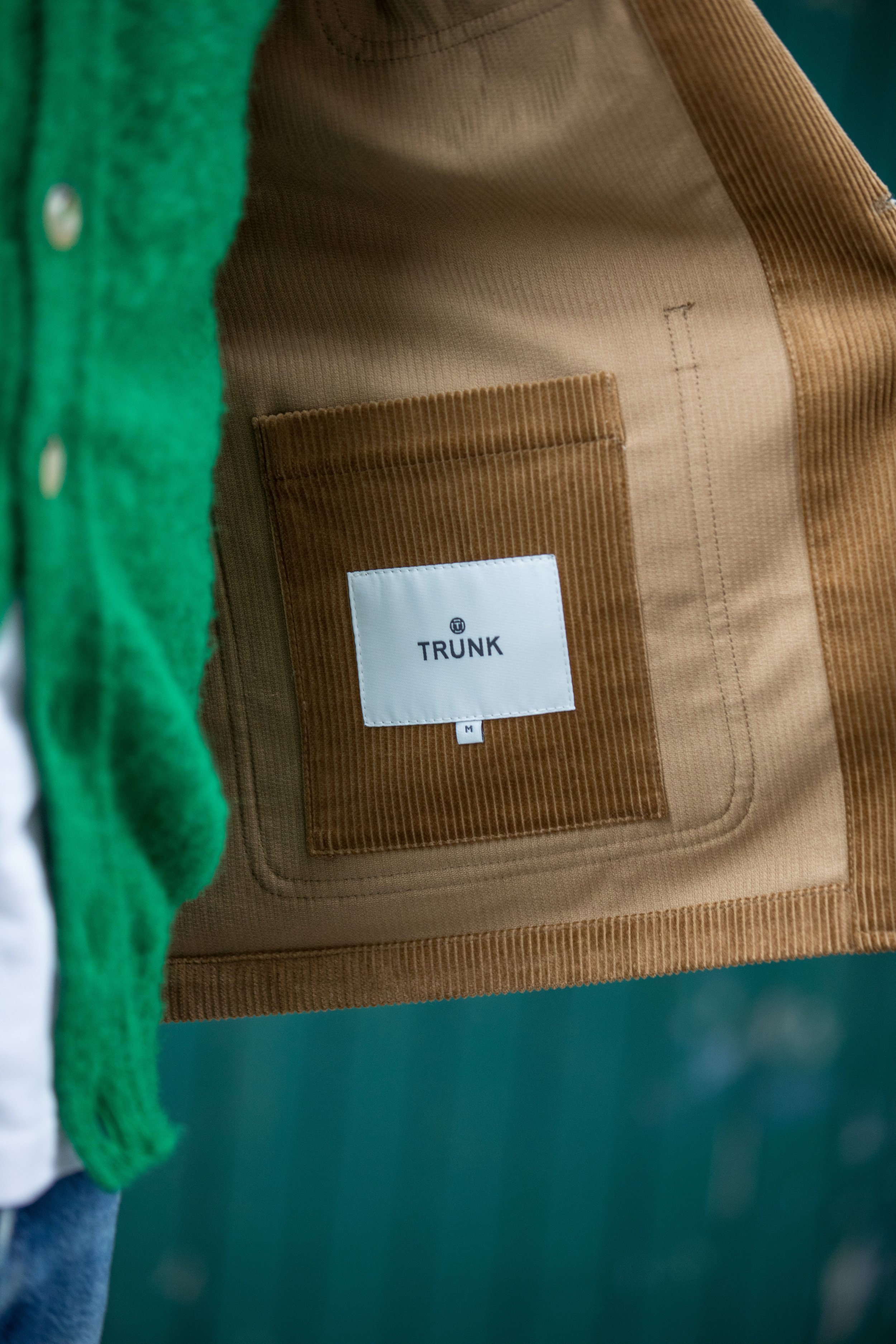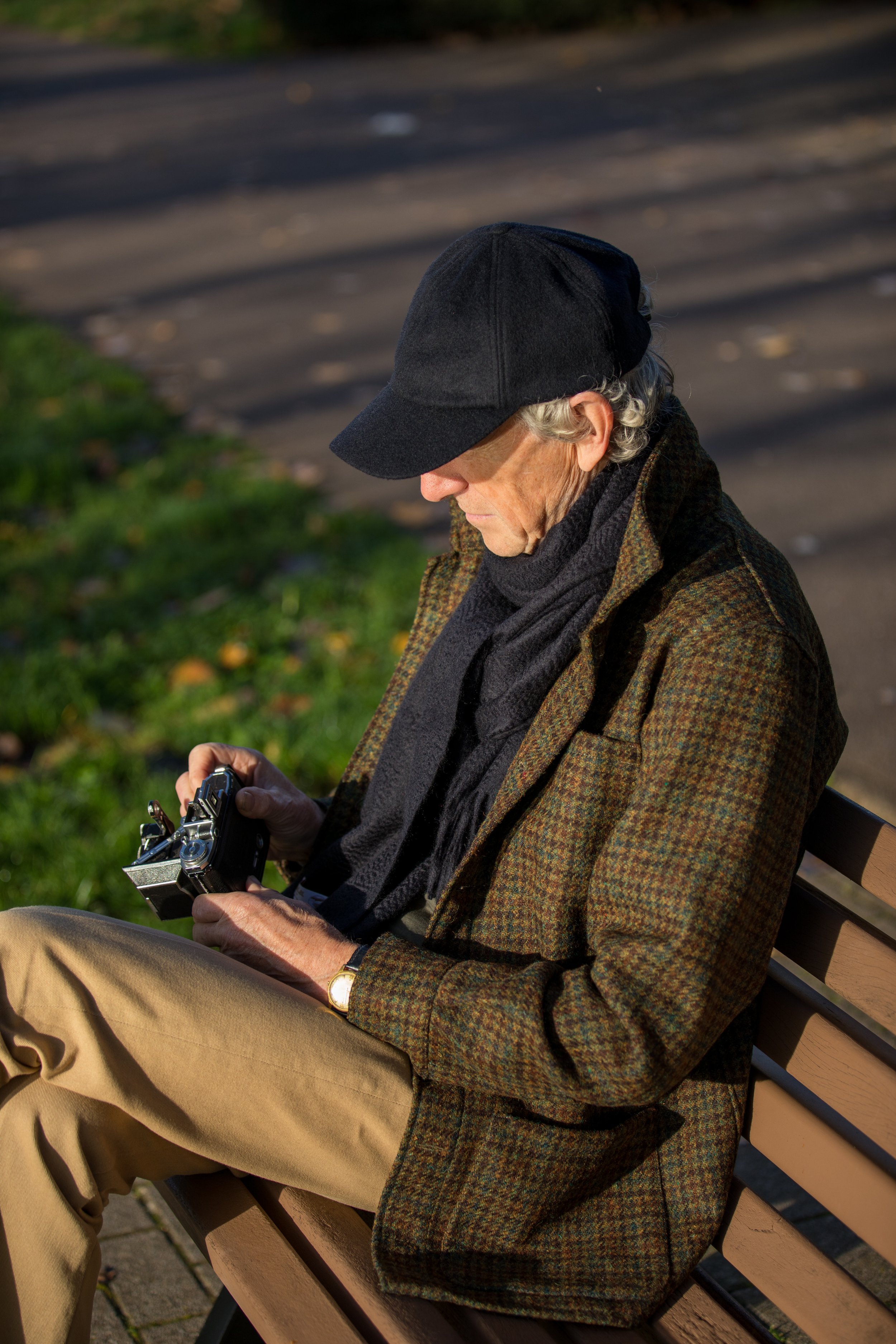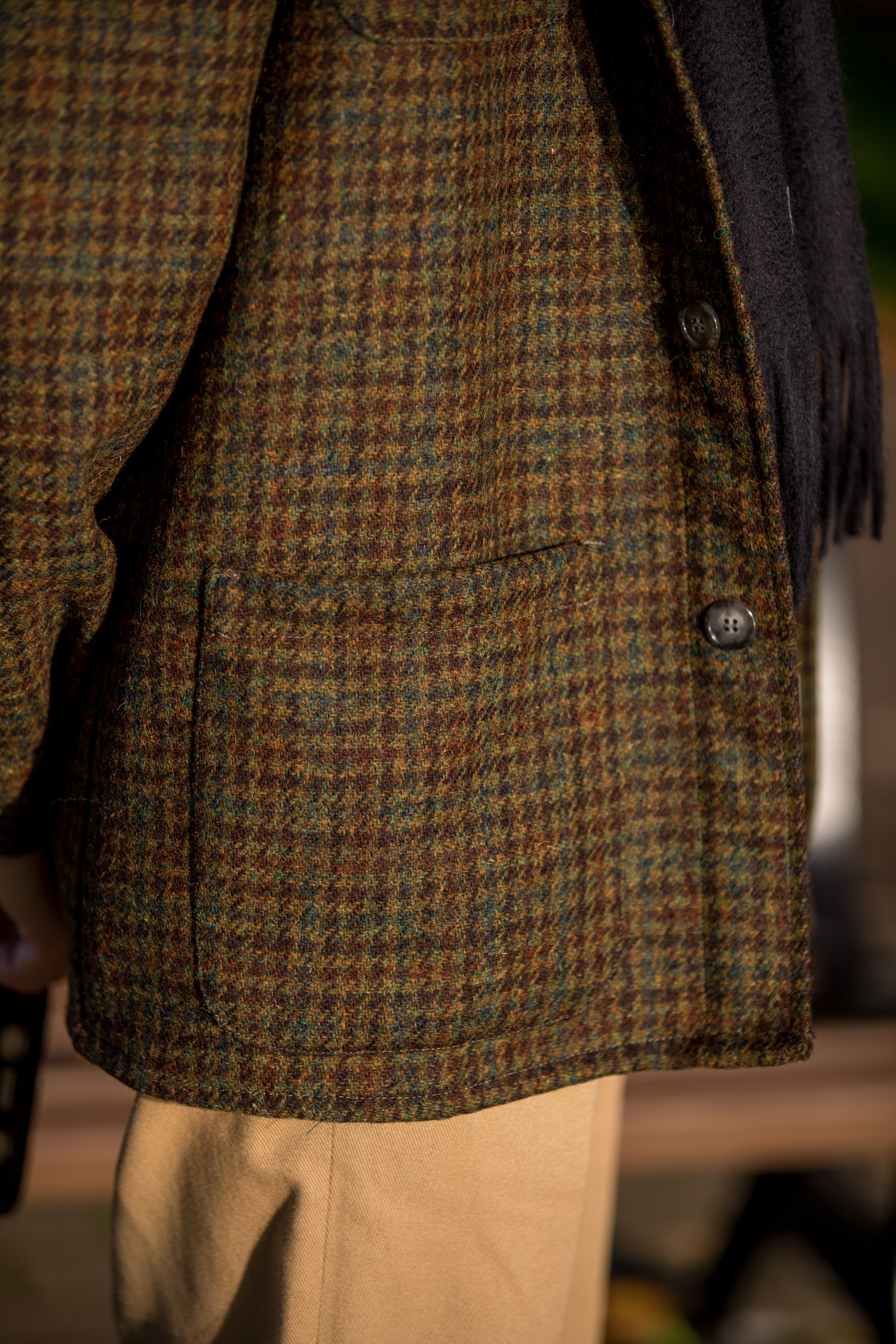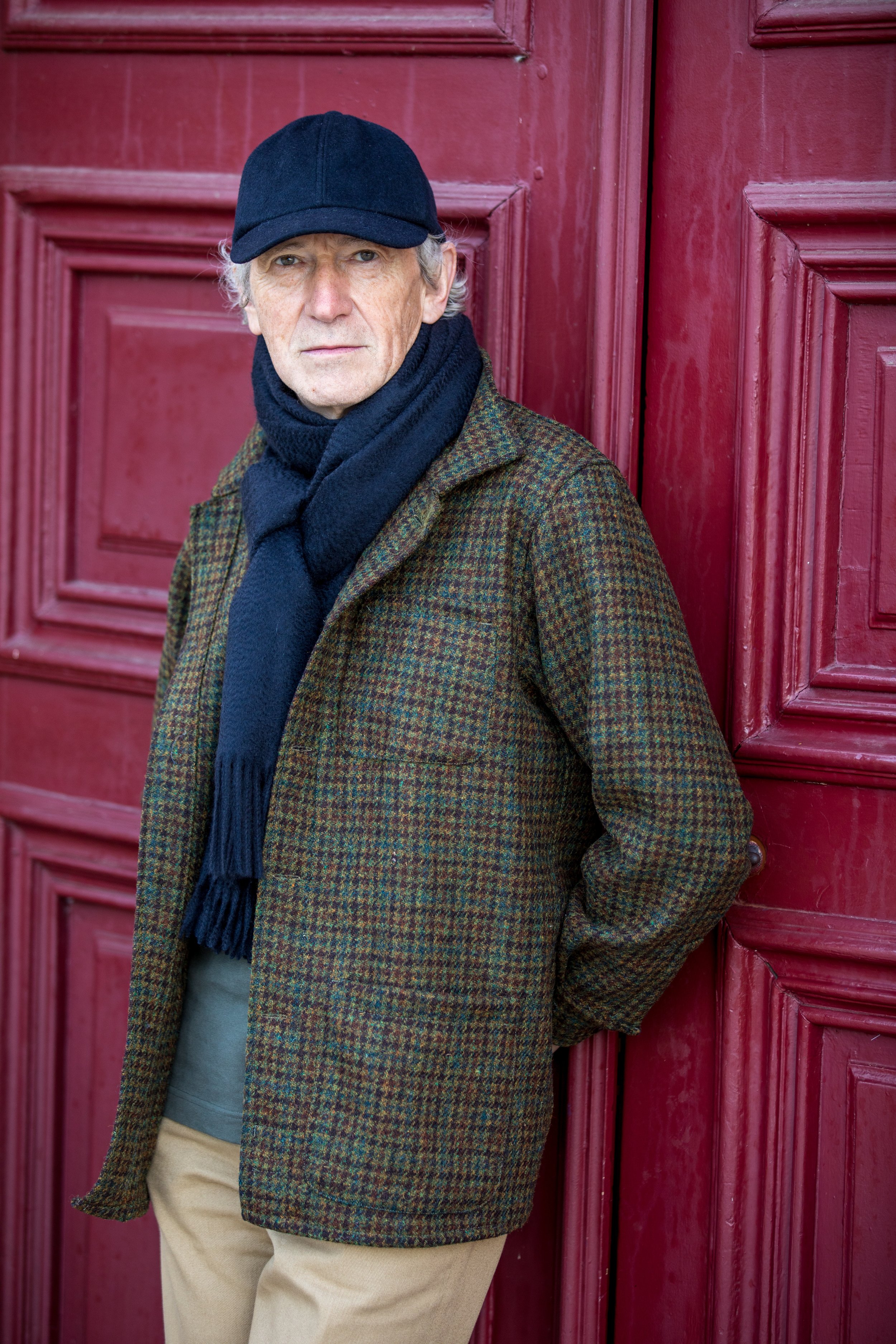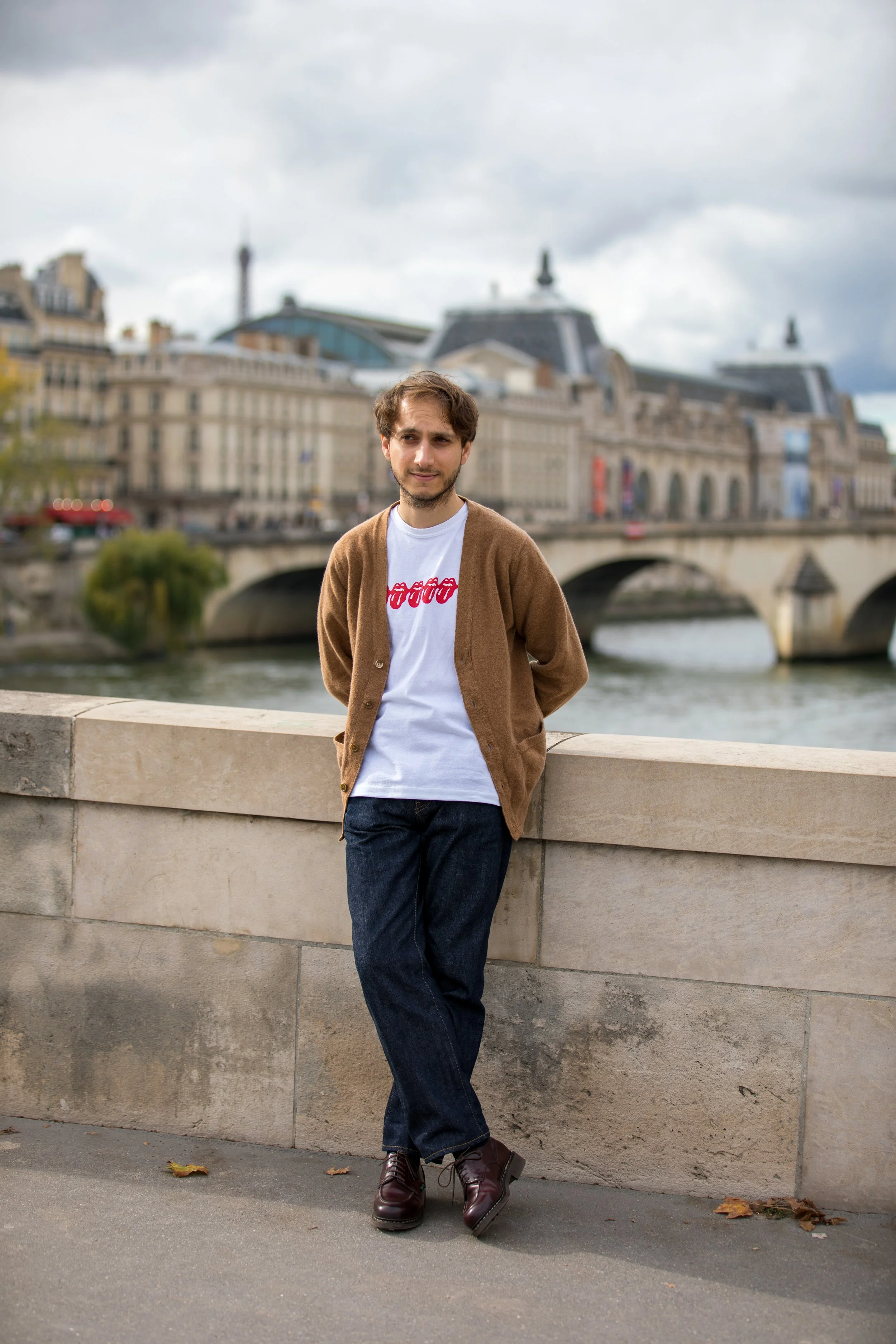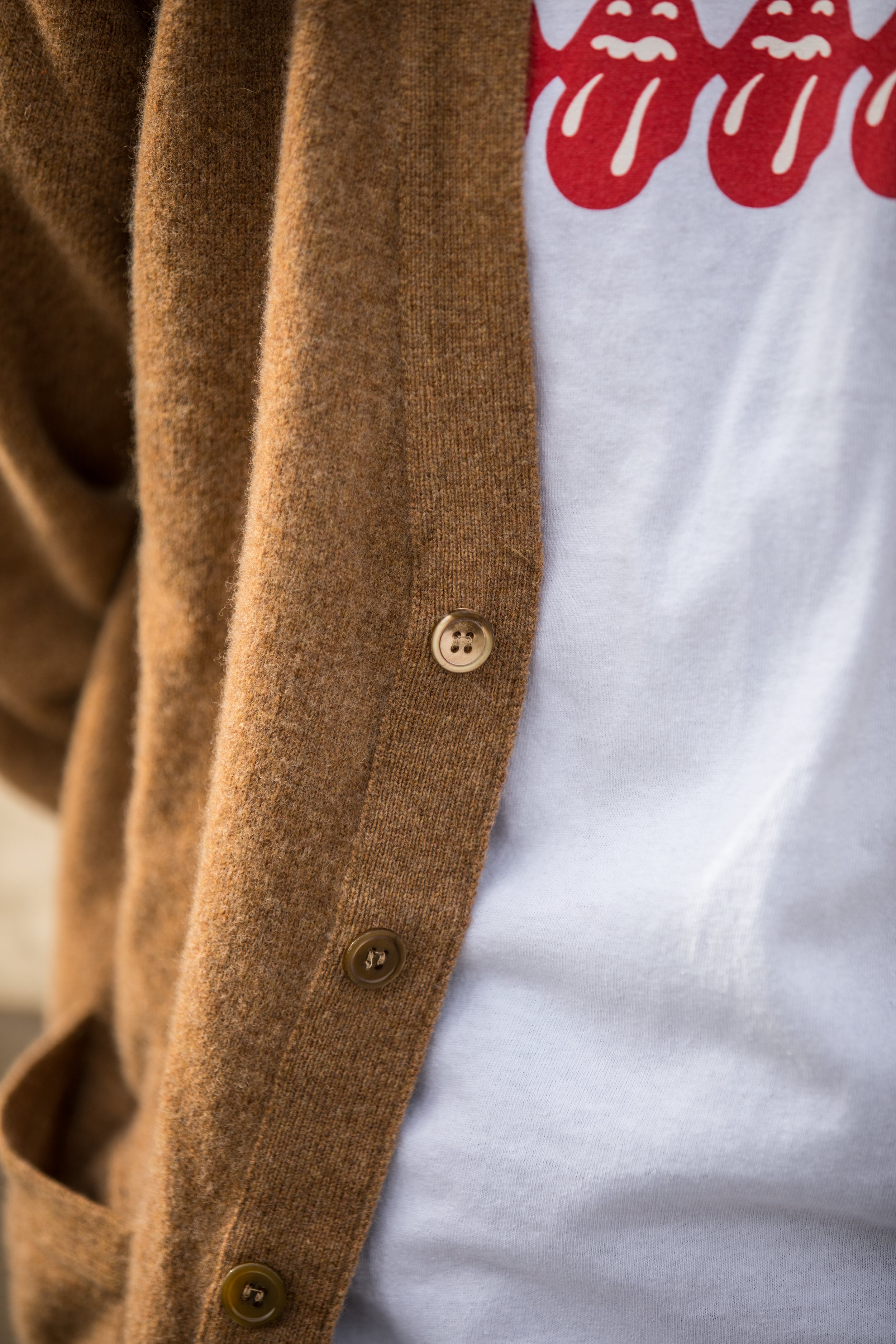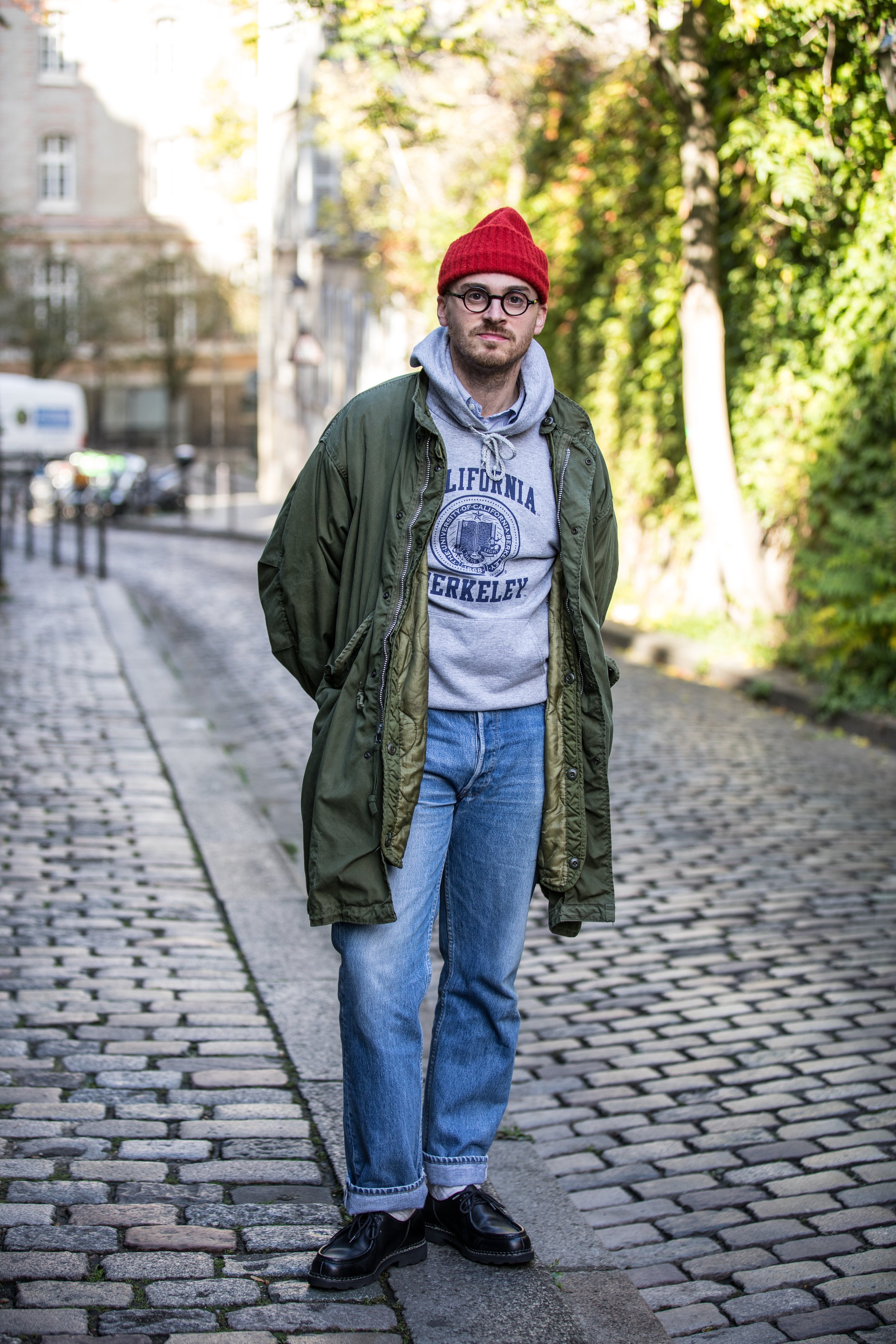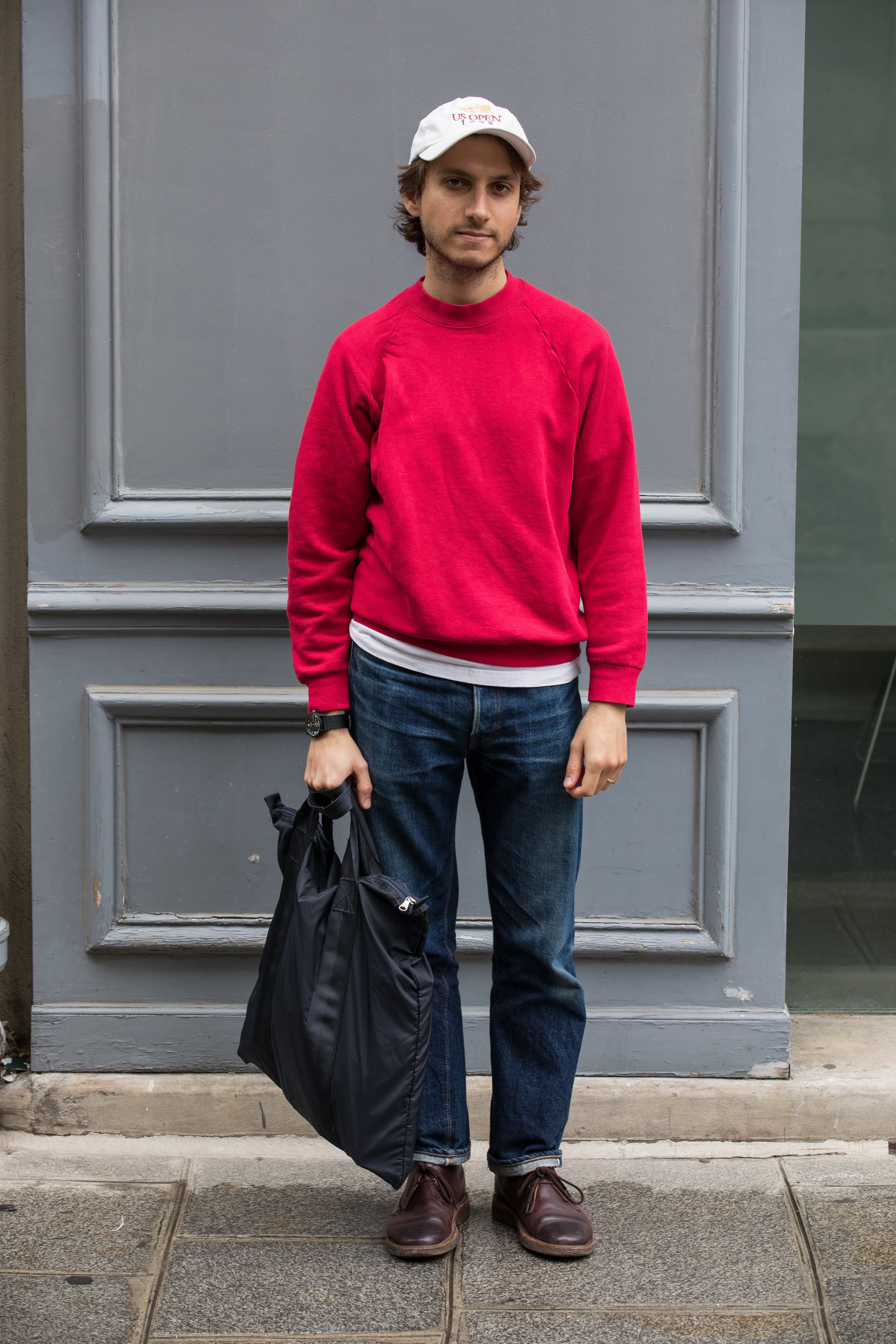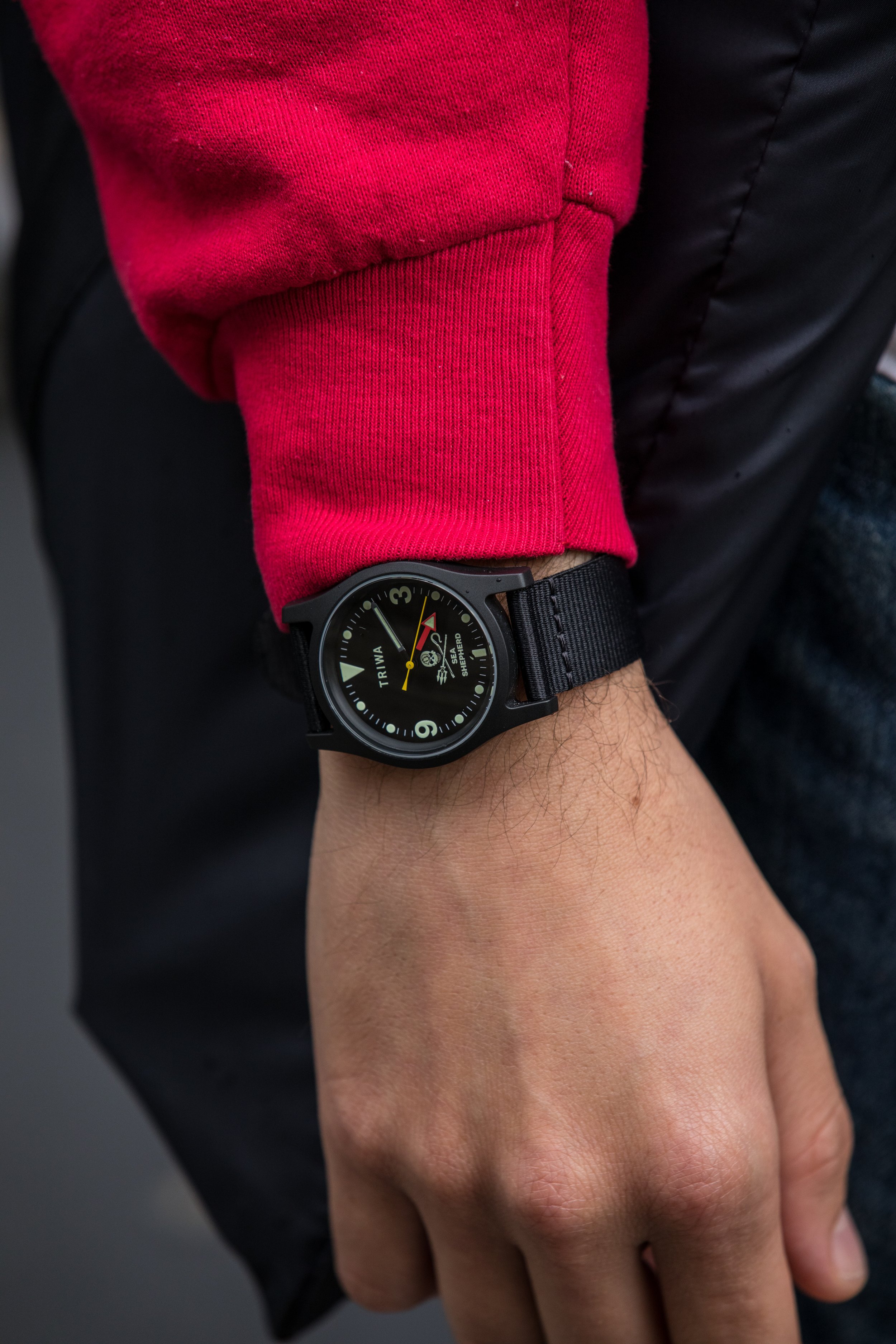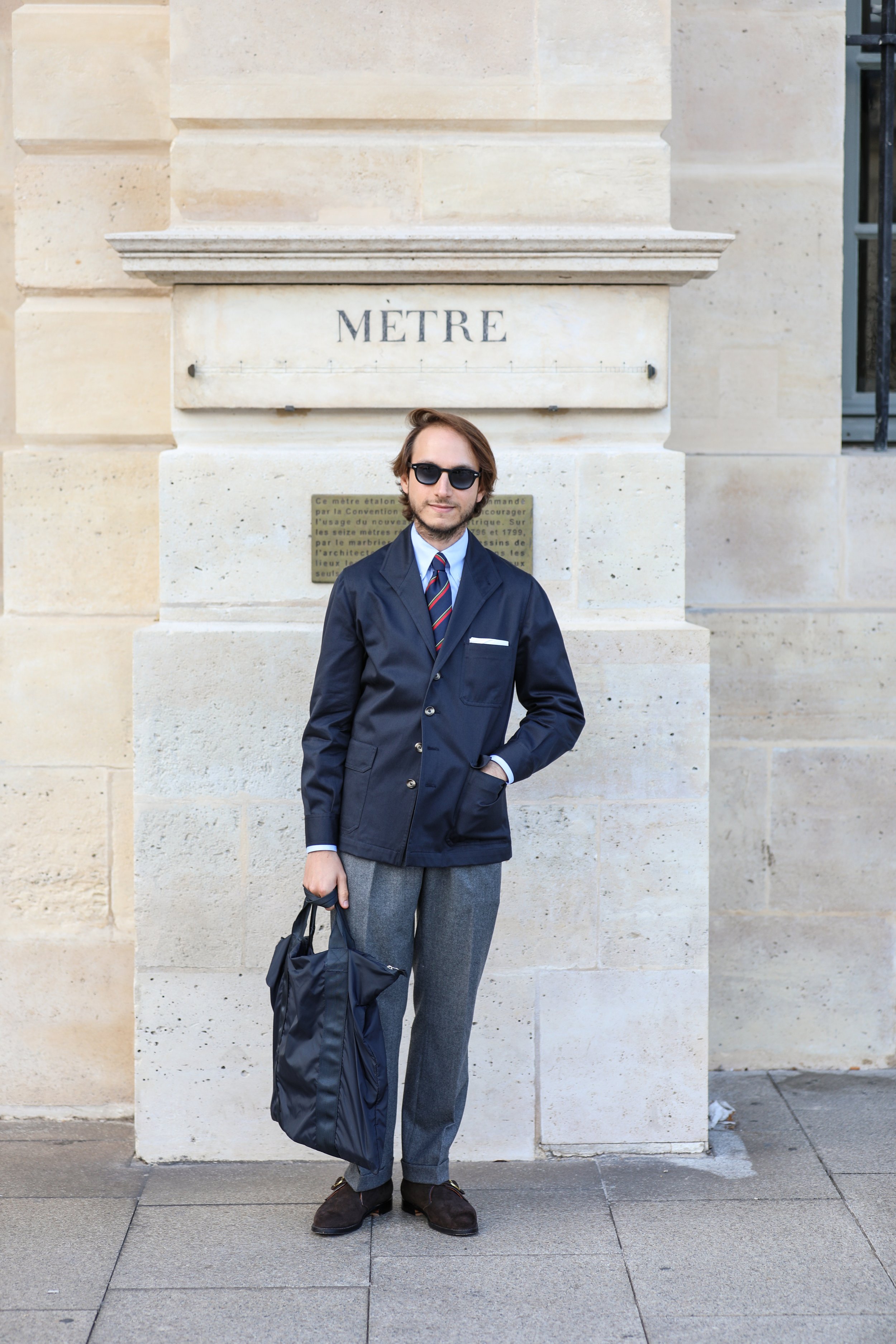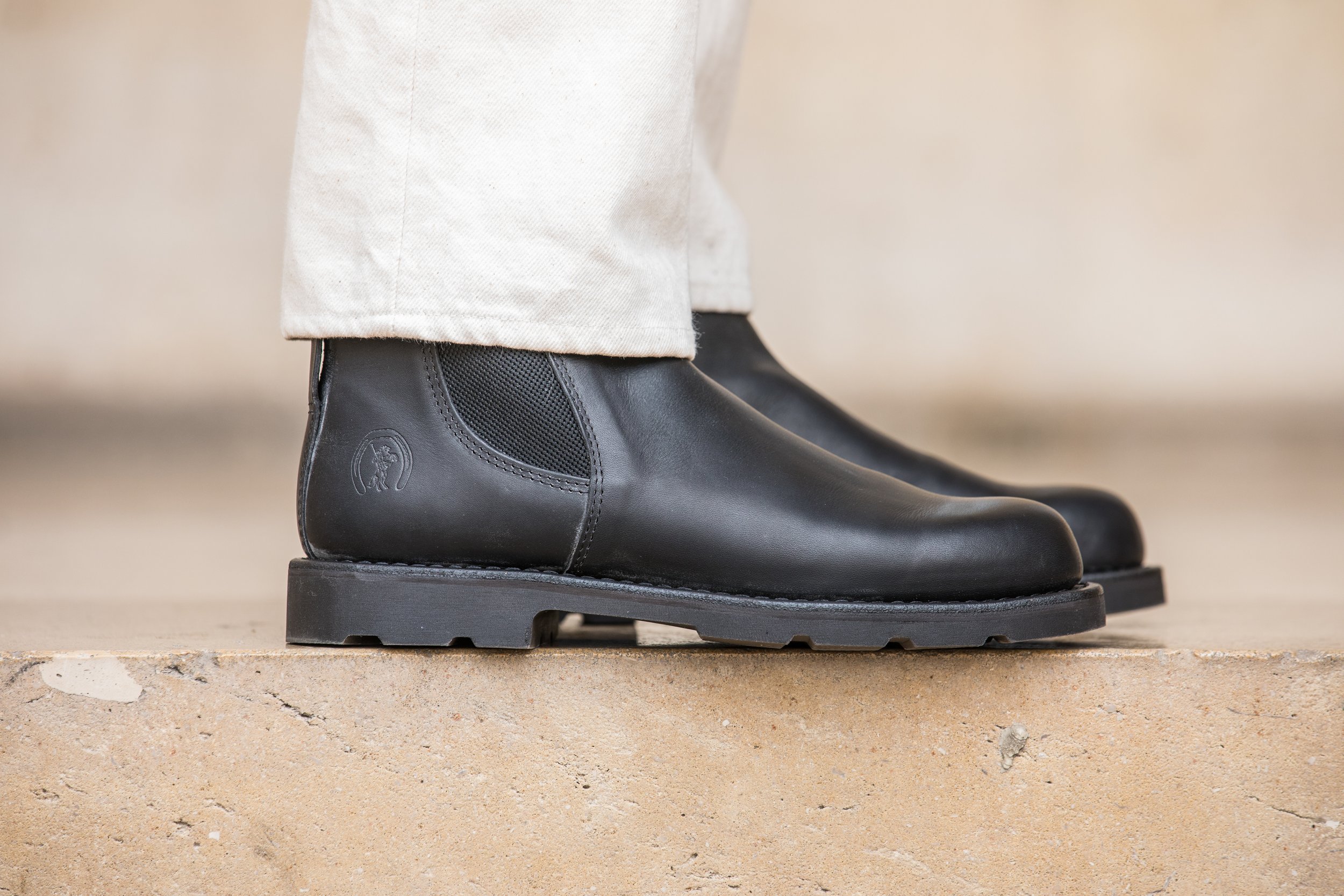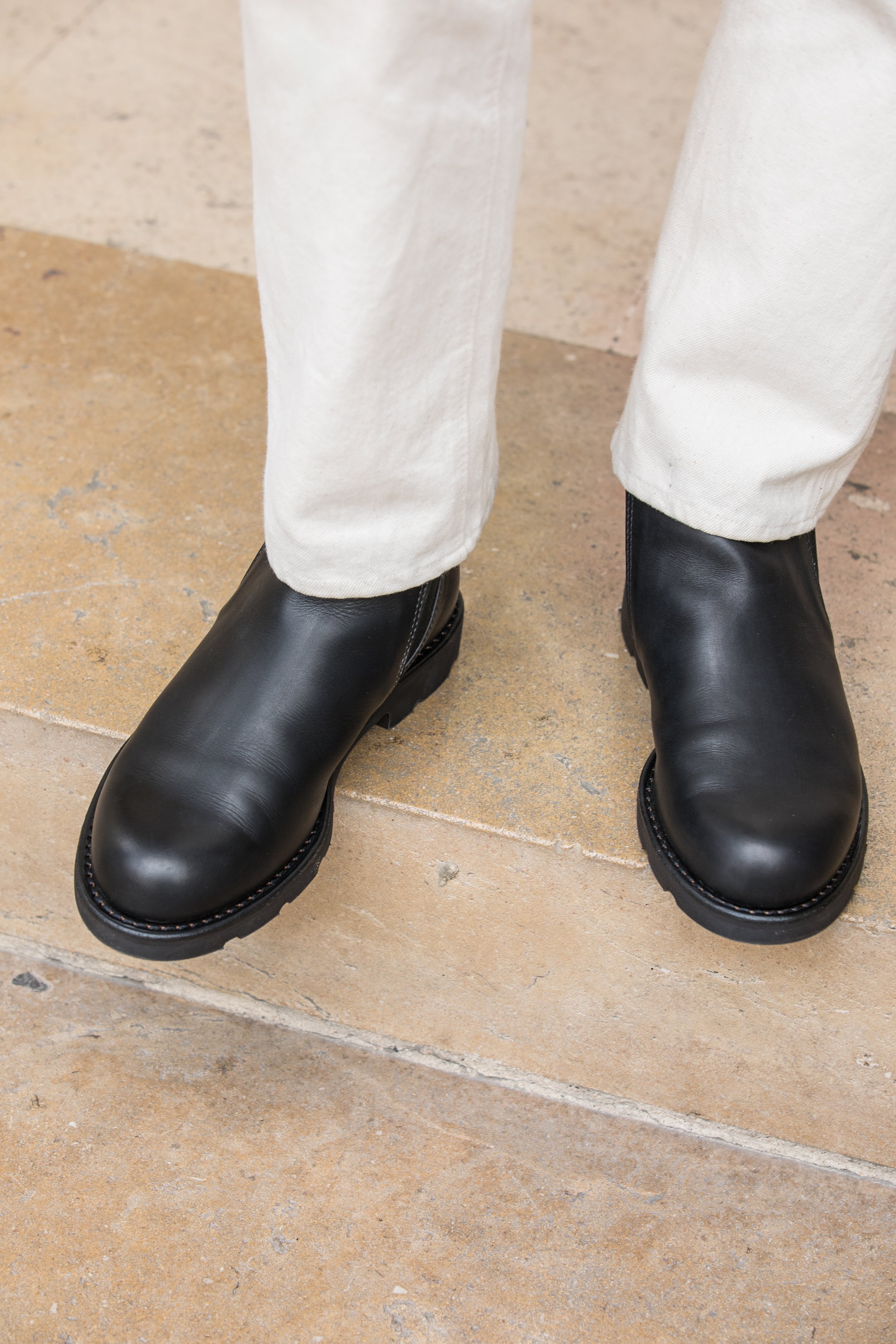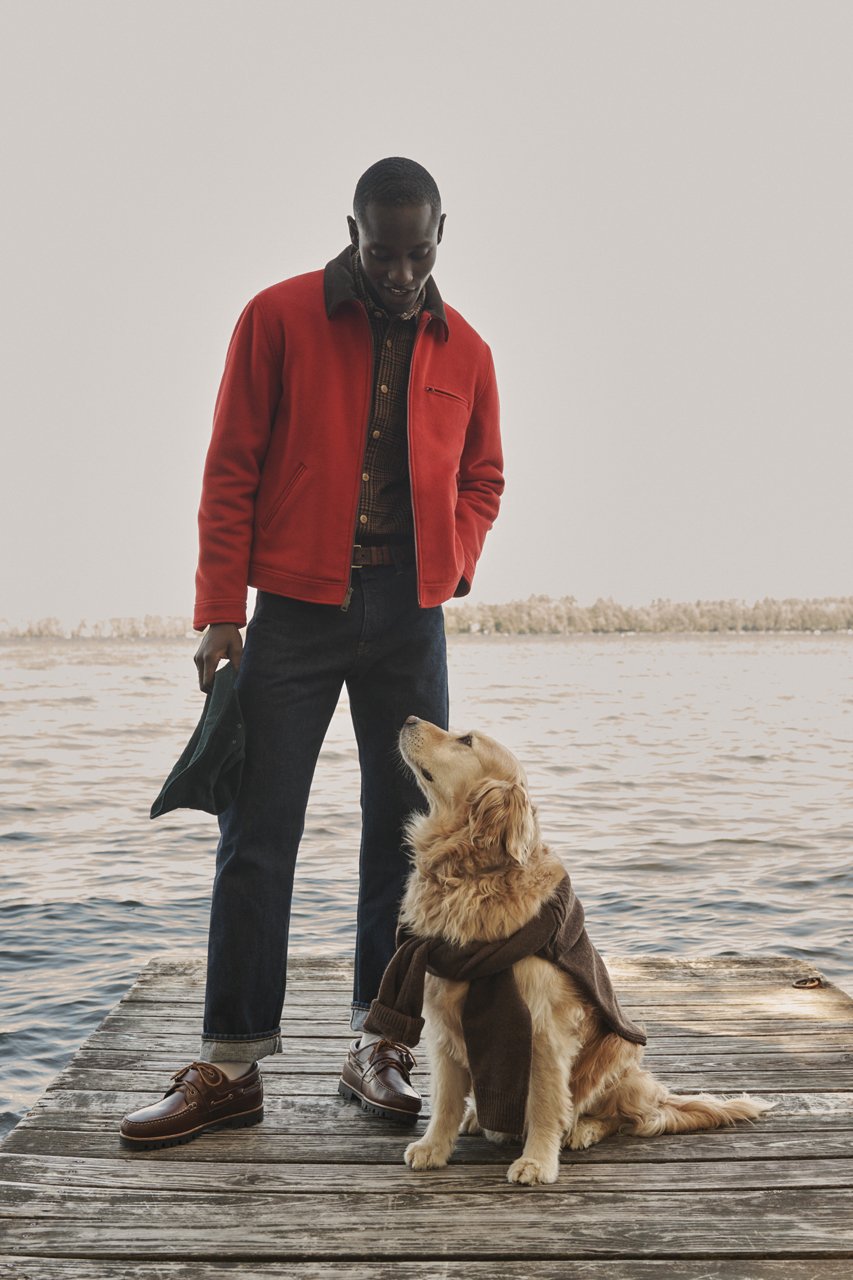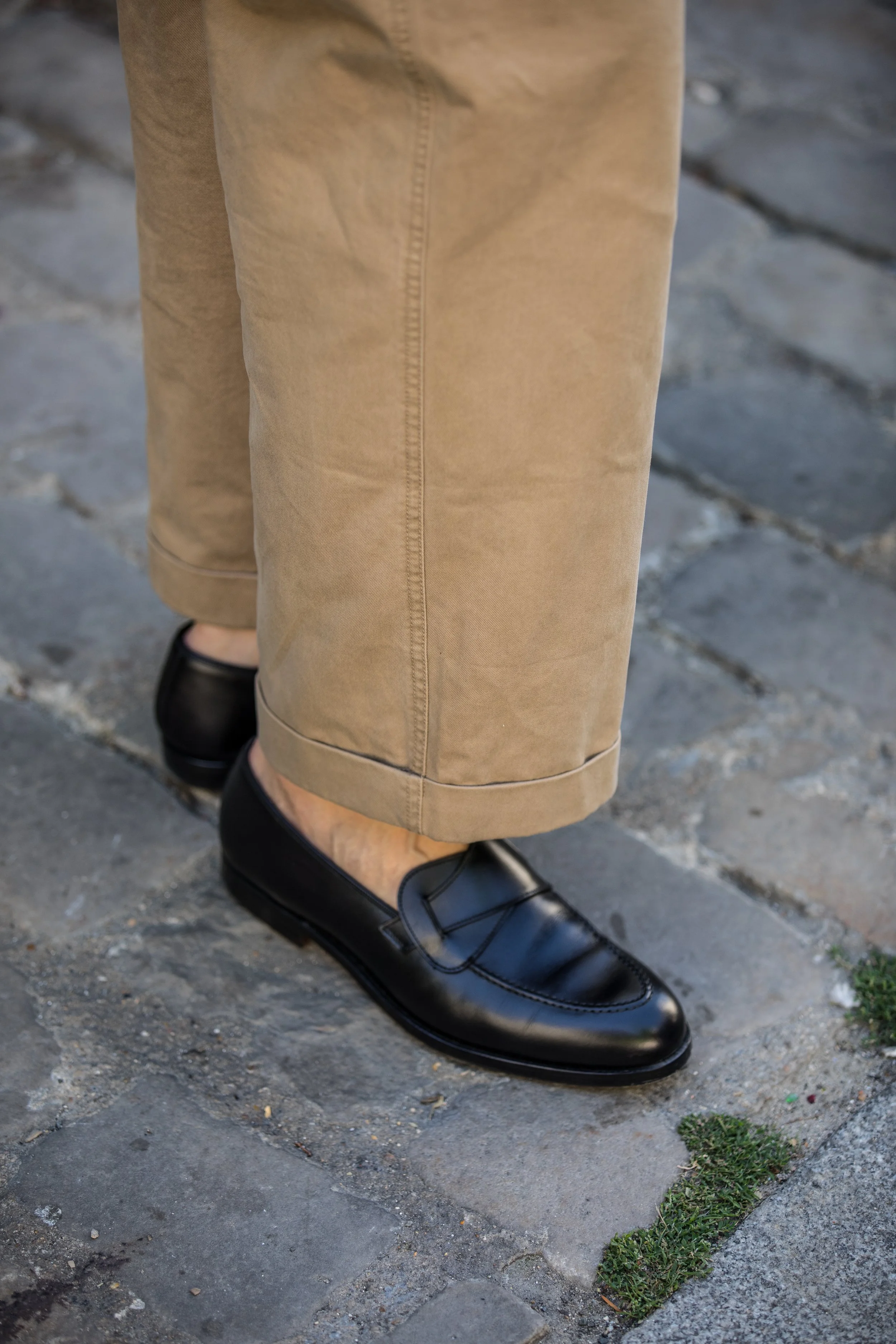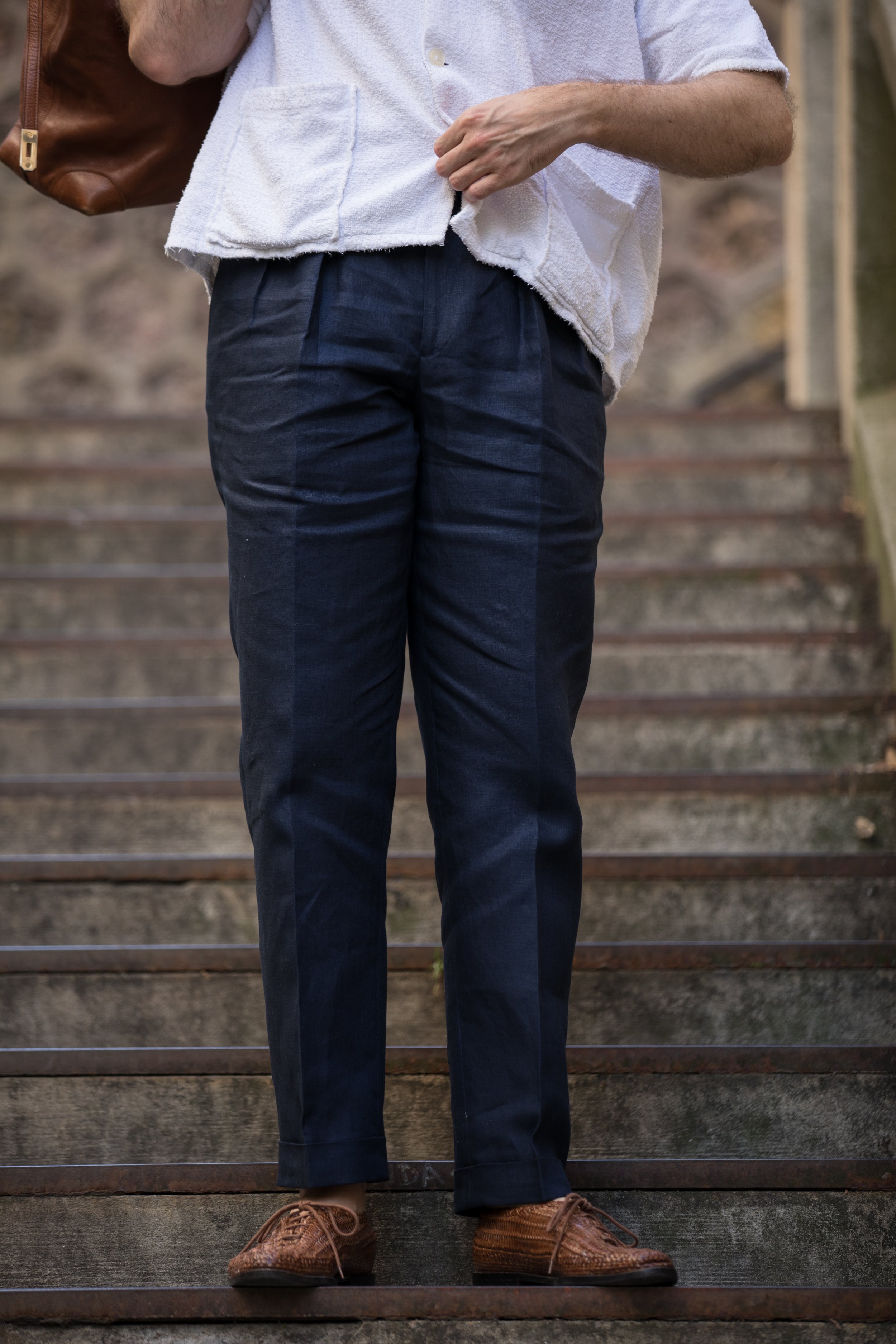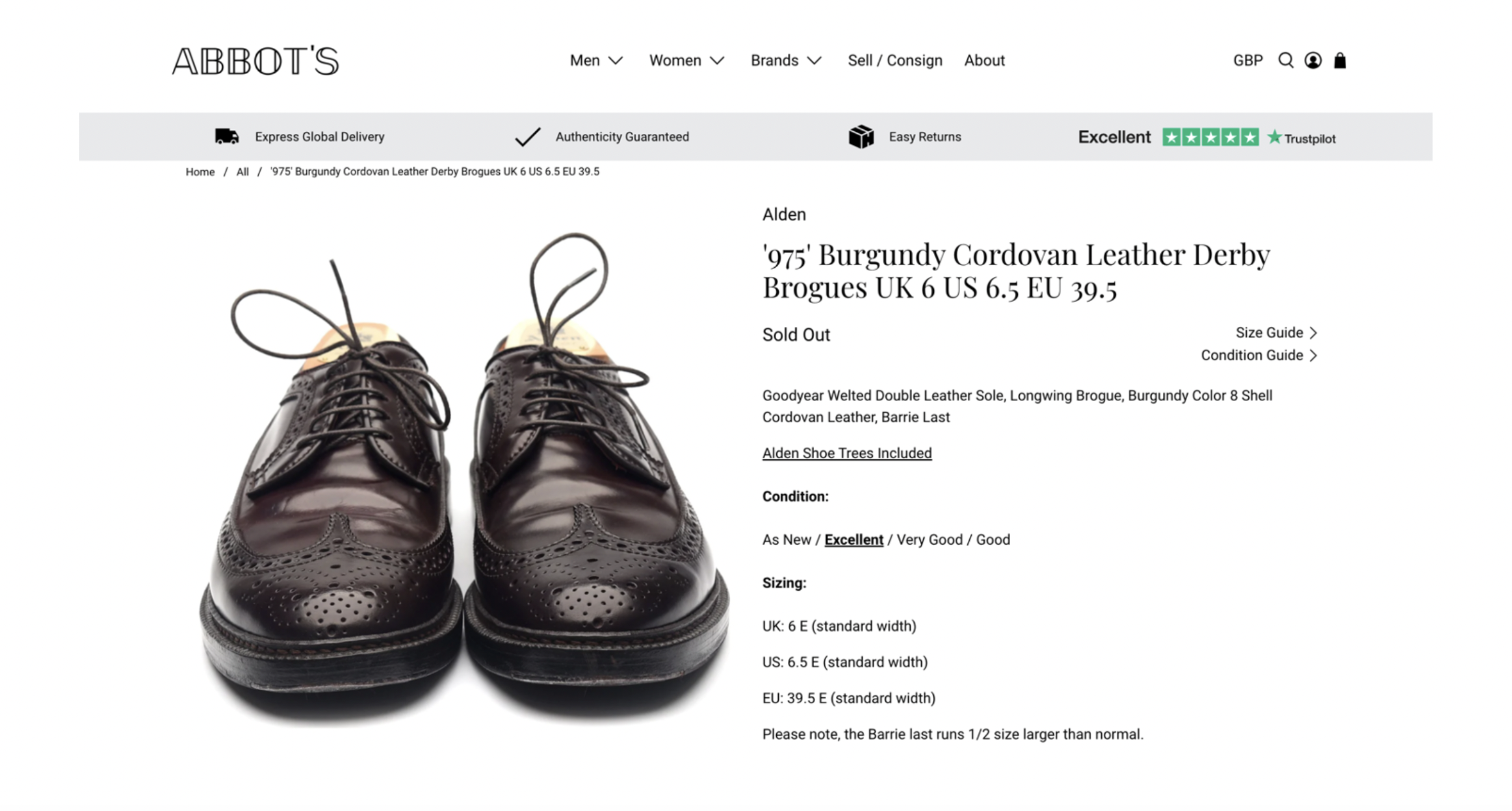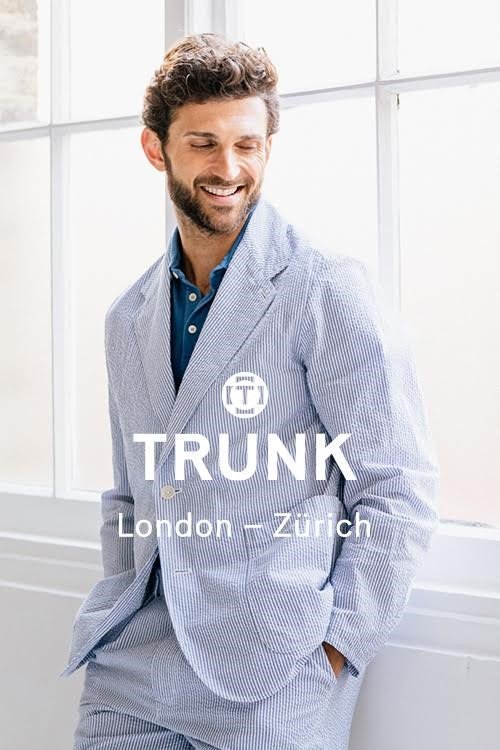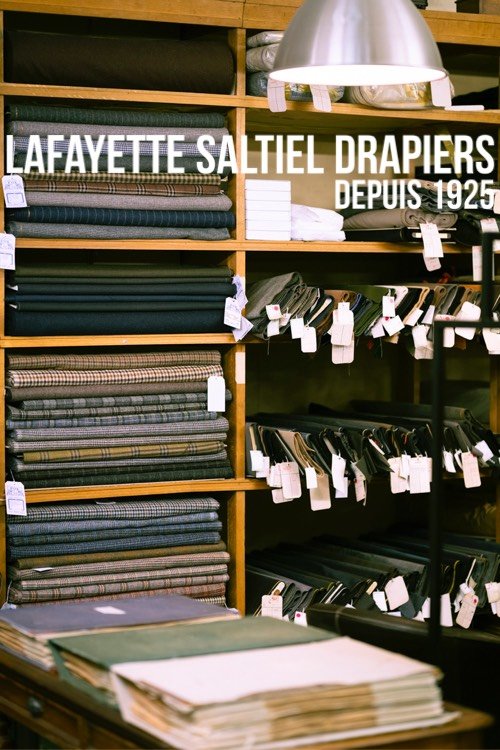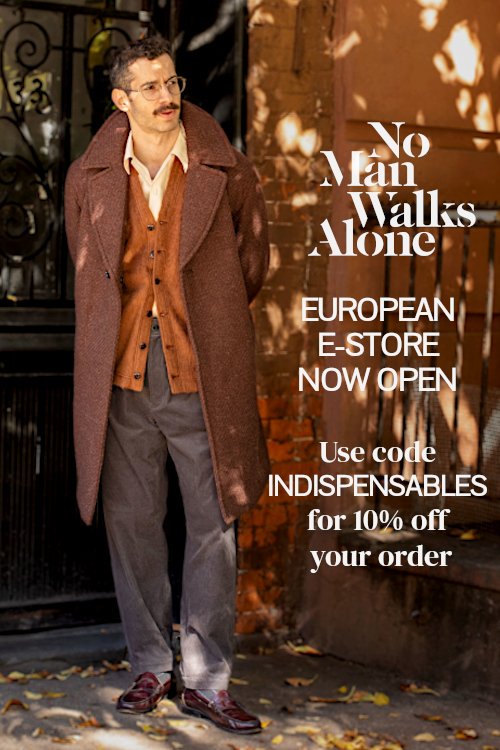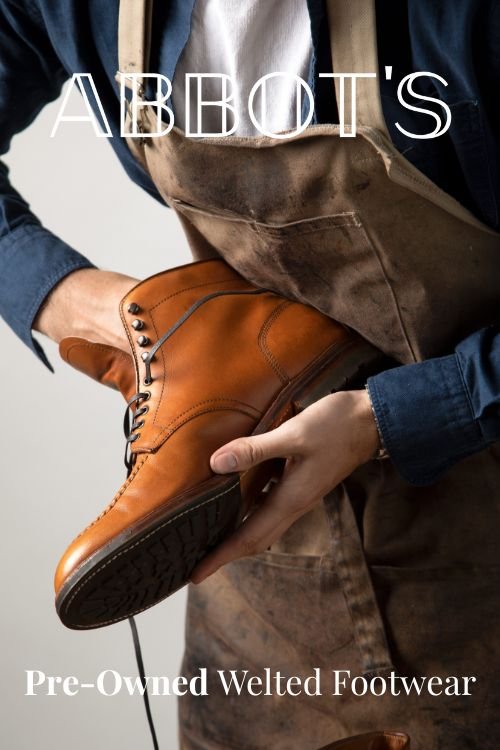We have already written an article about Réginald-Jérôme de Mans' book, « Swan Songs ». From our point of view, it is one of the best books of the last 10 years on menswear. So when we heard he was doing a signing at Chato Lufsen in Paris late last year, we immediately thought of him for our Readers' Attire series.
This have us the opportunity to ask him a few questions.
Where does your love for French craftsmanship come from?
Without wanting to echo the lengthy historical evocations that my friend Die, Workwear! begins his essays with, we have to go back to when I started prep school in the American Northeast. Prep really isn’t how people think of it today, which is this idealized, embellished image based on Ralph Lauren’s latter-day syncretism and a sort of nostalgia tinted rose by people who weren’t there to begin with. Prep is, fundamentally, adolescent, based on the insecurities and presumptions of high school (the elite “preparatory” high schools supposed to prepare you for admission to unbearably expensive prestigious universities) and youthful privilege. As can be expected out of anything adolescent and high school, it’s based on ideas of exclusion. And insomuch as it originated out of the American northeast, the underside of its exuberance is cold and inimical. It is categorically not elegant. Rather, it is a hegemony and homogeny of oxford cloth button-downs and khakis, of LL Bean backpacks with their damn reflective stripe across the back, and above all of fear: fear of not belonging, fear of being discovered. We quickly learned not to mention that we didn’t have a second house at the shore and that we didn’t spend our winter breaks skiing in Colorado or Switzerland. The same conformity extended even unto the music listened to. A very bourgeois mediocrity, a very bourgeois presumption that the world would continue to offer those of us who belonged everything they needed to continue and perpetuate their belonging, to the next generation. For me, it was a cold shock. I do not like being labelled, so I strove to define myself rather than have others smugly define me, including in how I dressed. I could not lay claim to a preppy wardrobe selected reflexively by a family that knew these codes. But in a discount store I found a Christian Dior overcoat, a diffusion-line thing from way back before LVMH had bought back all the Dior licenses. Despite it being not particularly interesting-looking, the name made it exotic to me, completely beyond the preppy world that was not about beauty of appearance, but about known quantities. The coat was the first garment that gave me the abnormal curiosity I have to learn more about the history, the cultural references, and so on of brands and makers. The next year a telefilm of Mrs. ’Arris Goes to Paris aired featuring my favorite actor, Omar Sharif, so I watched it. As it’s about a lower-class woman who goes to Paris to buy, with her savings, an haute couture Dior dress, it could be a metaphor for my sartorial life since then.
More seriously, as I began to get interested in quality clothes, I especially became interested in British makers – as I wrote in my book, there’s nothing more French than Anglophilia. But having lived in France at several different periods of my life, I had gotten to know certain French brands and shops, more certainly than the average iGent. And happening to live in Paris just after Sulka’s closing, during the final years of Old England and Arnys, I had the opportunity to visit them often as well as to discover other places like Anthony Delos’s shop back at the time he was on his own. Or, for that matter, Charvet, which is obviously well known but which became my first custom shirtmaker because at the time I thought I would order just one shirt, but it would be perfect and in just the color and pattern I wanted because I had thought that if Charvet didn’t have it, it doesn’t exist. As it turned out, I ordered one shirt after another and I discovered that even Charvet couldn’t stock every color and pattern I dreamed of. But I had the good fortune to use them when their patternmaker was Luis Penedo, who had been at Gaillet before and after Hermès bought it, and at Sulka Paris, and he rigorously perfected a fantastic pattern for me. I eventually realized that, rather like with my coat, I wanted something that no one else could have, either through my knowing more or through the rarity and unusualness of the item. So I had the tailor at Charvet, who had made for Philippe Noiret, one of the most elegant Frenchmen of the last 50 years, make me a custom sportcoat – although very few people seem to recall that Charvet has its own tailor, he’s very good, and at the time was quite reasonable! While I was in Paris I continued to use an English tailor, but the international man of mystery Michael Alden also opened my eyes to the Groupe des cinq and to the French tailoring tradition, seeding a curiosity I wouldn’t satisfy for years. And thanks to him, I found my current shirtmaker, Marc Lauwers. While I haven’t tried every shirtmaker currently working, in my limited experience he is the best still in business, and certainly the most elegant!
What really crystallized my sartorial Francophilia such as it is was, ironically, my former literary agent’s request to find a subject for a book. I realized after some reflection that there wasn’t any book about makers of French menswear that discussed them with intelligence and incisiveness. (Since that time, of course, Hugo Jacomet published his book, although the two of us approach our subject differently.) That request even led me to place my first order with Camps de Luca, although I discovered that the excuse “it was just for research!” doesn’t work with wives even in this case. I’ve particularly invested in vintage from various French houses, so that the old pulsion I had to exceed, to find something no one else had or could, took a different aspect, that of having something that no longer existed, something that would require a voyage in time to attain. Because today’s titans can afford to order before breakfast as many suits as I’ve saved a decade to buy, and can order grail watches the price of a luxury car the same way that I buy beans for my coffee machine. But they will never know which labels are the sign of the great periods of Sulka’s existence, or what made some of the old cashmeres made for Hermès and Charvet decades ago better than anything sold by Loro Piana or Cucinelli today. Unless they read my book.
On your Instagram account you have fun with memes about French high end craftsmanship, is it a way for you to make this world more accessible?
When I started becoming Extremely Online I quickly saw that most influencers (and before them, the journalists who wrote about men’s style) engage in a sort of intentional distancing about their topic – bespoke, handmade craft, and so on – through a sort of elevation using cultural references (often through allusions to texts they themselves have not read), or references to former customers themselves served by cutters and lastmakers dead for a half-century, or to mythical craft practices as esoteric as the Elysian Mysteries. That way, they can make themselves seem more important, as having access to these otherwise rarefied and exclusive worlds… and thus also seem like members of the presumed exalted class to whom these worlds were habitual (and in so doing, crafting a ridiculous and exclusive idea of the “gentleman”). And in their own turn, certain brands both large and small took advantage of the same sort of image-building to live on those reputations and take short-cuts in how they actually worked. Neither I or nor most of these oracles, nor 95% of our readers including the creepy RETVRN traditionalists who gravitate to discussions of classic clothing, are actually part of that supposed class to whom grande mesure was a commonplace. In fact, that class, to the extent it existed, would have taken for granted these things that to us are so exalted and luxurious, and as such taken no pleasure in what were simply what one did, as part of routines and ceremonies. Those of us who have to do it with intentionality, who find excitement in its novelty and in every minutely surveyed detail of an order, are people like me presuming above our stations. So we create fantasies and each completed order, which can never live up to unstated dreams, is tempered with disappointment. There are many different humorous perspectives to this mentality and vicious cycle. Irreverence is necessary to make sense of it, to deflate all the mummery and ridiculous pretentions. I always think of the lucid conclusion Tyler Brûlé, the founder of the hypermodernist magazine wallpaper, made: that in reality the person who actually bought the beautifully curated items his magazine’s spreads carefully set out was “some banker” – just a finance bro with means but dubious taste.
I like to joke that (to paraphrase Black Sabbath) I sold my sold for steez. I spent decades thinking about it, reading books about it, and questing for endless grails. Unlike what the people I described above suggest, there is never one magic purchase that will change your life, or that will make you a member of the elect in those Slim Aarons photos or Alexander Kraft layouts. Even in the most legendary shops you can be treated more like cattle by intern salespeople who know about as much. So “we must imagine Sisyphus happy.”
Your book, « Swan Songs » tells the stories of great Parisian houses of the past, most of them defunct today. In your opinion, which brand(s) were able to capture this heritage?
Rather like the Greek epigram’s seven towns that claim Homer’s birth after he died (Doh!), a dozen Paris shops now try to be the heirs to Arnys’ spurious and invented French tradition… While Arnys’ former accessories designer Dominique Lelys is active at Artumès & Co., I think Christophe Bréard at Chato Lufsen maintains the creative and luxurious inspiration of Arnys and the eccentric elegance of certain other defunct houses that I wrote about. Nothing, on the other hand, could replace Old England because what made it memorable was its cavernous, baronial interior, majestically luxurious in a manner that cannot be replicated today. But for those looking for integrity of craft in the highest tradition, Marc Lauwers maintains it in shirtmaking, while Camps de Luca has become the centerpiece of the two traditions of French tailoring from the last century: that of the Groupe des cinq (who were actually rebelling against a classic tailoring old guard by cutting new fashions in new lightweight cloths) and in indeed the classic, as the styles of custom tailoring became fully classic from the 1980s onward… Ironically, almost all the remaining Paris tailors are from the Groupe des cinq and their alumni. Even Cifonelli, the last of the grand classic Parisian tailors, added first Claude Rousseau then Gabriel Gonzalez to its forces, both of them former Camps cutters.
Do you have any style obsessions?
Not sure if I’ve well understood the difference between this question and the two following, but color and transgression within the classic are obsessions. Color particularly in rollnecks and my shirts, taking inspiration from the 1960s, Terence Stamp, David Hemmings in Blow Up, Lord Snowdon… That period had attracted me early because it was (at least superficially) a time when it seemed there was a democratization of elegance, or its availability to those who had the means, where non-upper-class sartorial obsessives like Stamp became icons, or a man of color, Omar Sharif, became the go-to actor of unclassifiable origin, playing Argentines, Armenians, Mongolians, Austrians, and so, so many different Russians. A man of unclassifiable origin and uncertain home, living for decades out of a hotel room at the Royal Monceau in his Huntsman and Cifonelli suits, tracking the seasons simply by, in his words, changing from cashmere polonecks to cotton ones from Harrods.
Various other finicky obsessions of mine spring from that period, like the collar i order on shirts, an English spread just a bit higher than the norm, and for 20 years jackets cut in the hacking style with diagonal pockets and double vents. And always side adjuster straps on my trousers instead of belt loops.
Esthetically I’m obsessed with the hauntological, as Derrida usefully conceptualized it: visions from the past of what could have been and of what we – those of us who certainly would not have had access to those nice things in the past – could have done with them as postmodern reinvention. That is why I loved so much the “15” concept store that operated in Paris from 2003 to 2004, putting Art Deco classics next to the best of current French craft creating a rigorously curated set of items. Fantasies that confront our much more prosaic, even nightmarish, world.
The accessory you can't live without?
My reflexive answer is the RJ cat pocket square that I nagged Kent Wang to put into being so that men around the world could keep my late cat close to their hearts but in reality I almost never wear decorated silk handkerchieves anymore… I prefer to wear simple linen handkerchieves to avoid the Pitti look.
When it’s cool out I do always wear a good pair of gloves and a nice scarf, as you might see from the photos you took. For whatever reason I always feel coldest at my hands and neck, which is one reason I like rollnecks and scarves so much. For scarves it’s either the cashmere-silk prints (I started wearing printed silk scarves in high school to appall preps) or the oversized cashmere scarves from Begg. I prefer and collect gloves from French makers, although the best-known houses are no longer very good in my humble opinion.
What do you think is a must-have in every man's wardrobe?
Rollnecks in lambswool or a good cashmere, beginning with black (Archer’s “tactleneck”), but ideally in all the colors of the rainbow. I live in them during the winter. After that, the most essential thing is a good alterations tailor, which is hard to find nowadays.
What brands do you like?
For a long time I was a fan of the British designer Richard James. My favorite brands nowadays are … Caerlee Mills (the former Ballantyne mill in Scotland although now closed), the Holliday & Brown specially re-edited for Prada ties, and thanks to the years spent immersed in my book, Sulka items from certain periods as well as the merchandise from Hilditch & Key Paris: I can tell by the label whether things were made for the Paris branch, and they were not at all the same as the items sold at or by the main Hilditch & Key of London, which now dominates and which seems to be sinking into forgettable mediocrity.
Do you have any little known brands you can recommend?
As I’ve harped on French glovemaking, I have to recommend Lesdiguières-Barnier since no other glover is still working with French kid (Lavabre-Cadet recently announced they would no longer sell gloves in it, although it’s a stunningly soft and silky material). French-made peccary gloves are another obsession and Gérard Durand on rue du Bac sells the best quality at the lowest price. I also love sized socks and Crimson rue Marbeuf and Kimono on boulevard Haussmann have some of the best selections of over-the-calf socks in cotton or wool. Thanks to Martin Nimier of the old souliers.net site I also learned about A l’escalier d’argent in the garden of the Palais-Royal which sells handmade ties in 18th-century jacquard patterns.
My brotha from anotha motha Oscar Udeshi may not be that well-known in France. He has an incredible eye for the beautiful and the original as well as an obsession for the quality and integrity of the materials and construction of his products.
I should also mention the young leatherworker Victor Dast, who is all at once talented, humble and diligent. He is also a friend, but I have no commercial relation on quid pro quo with him.
What were you wearing during this shoot?
Haha, climate change threw me for a loop. Before my visit the forecast was about 15 degrees colder so I packed my thickest cashmeres (made by the same defunct Scottish mill for several different French houses in the 1990s) and heavy flannels…. and then we had damp but warm weather that I wasn’t prepared for at all, so I had to improvise. I’m wearing a vintage t-shirt in Karnak cotton (a super-silky and lustrous cotton that supposedly was harvested only every several years) and a lambskin M65 jacket, both vintage Hermès from the 1990s, a cashmere-silk scarf printed with medieval scenes from Hilditch & Key Paris from back when it sold more interesting stuff, ivory trousers in the Permanent Style x Fox cavalry twill copied by my Mystery Bespoke Trousermaker from my Camps de Luca trousers, and double-strap kid suede jodhpur boots made for me by Anthony Delos based on a model from the Lobb London custom catalog. The catalog used to be on the Lobb London site and had innumerable elegant models; Delos did his own version in order not to infringe Lobb’s intellectual property. Regarding the trousers, during the pandemic when no one could travel (and when we were not wearing suits but I wanted odd trousers to wear at home) I had an extremely attentive trousermaker copy my Camps de Luca trousers in many different materials (I later confessed to the de Lucas and sought absolution). Receiving my first pair of trousers from Camps de Luca, for the first time in my life I understood how clients of certain trousermakers could get so euphoric, since these were cut so elegantly and well despite the failings of my figure. Even my MBTM was blown away by their work, but he reproduced it excellently. And Crompton’s cavalry twill was a revelation: it’s thick, supple and stretchy.





